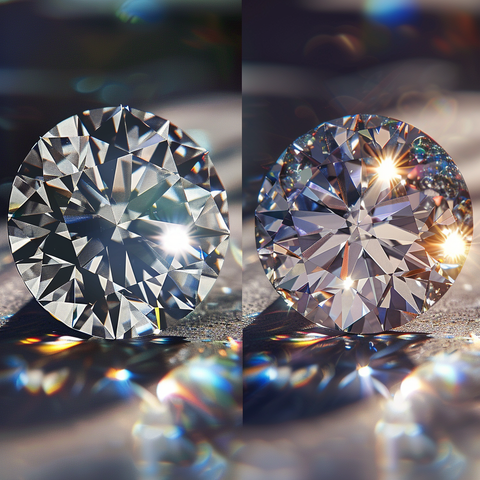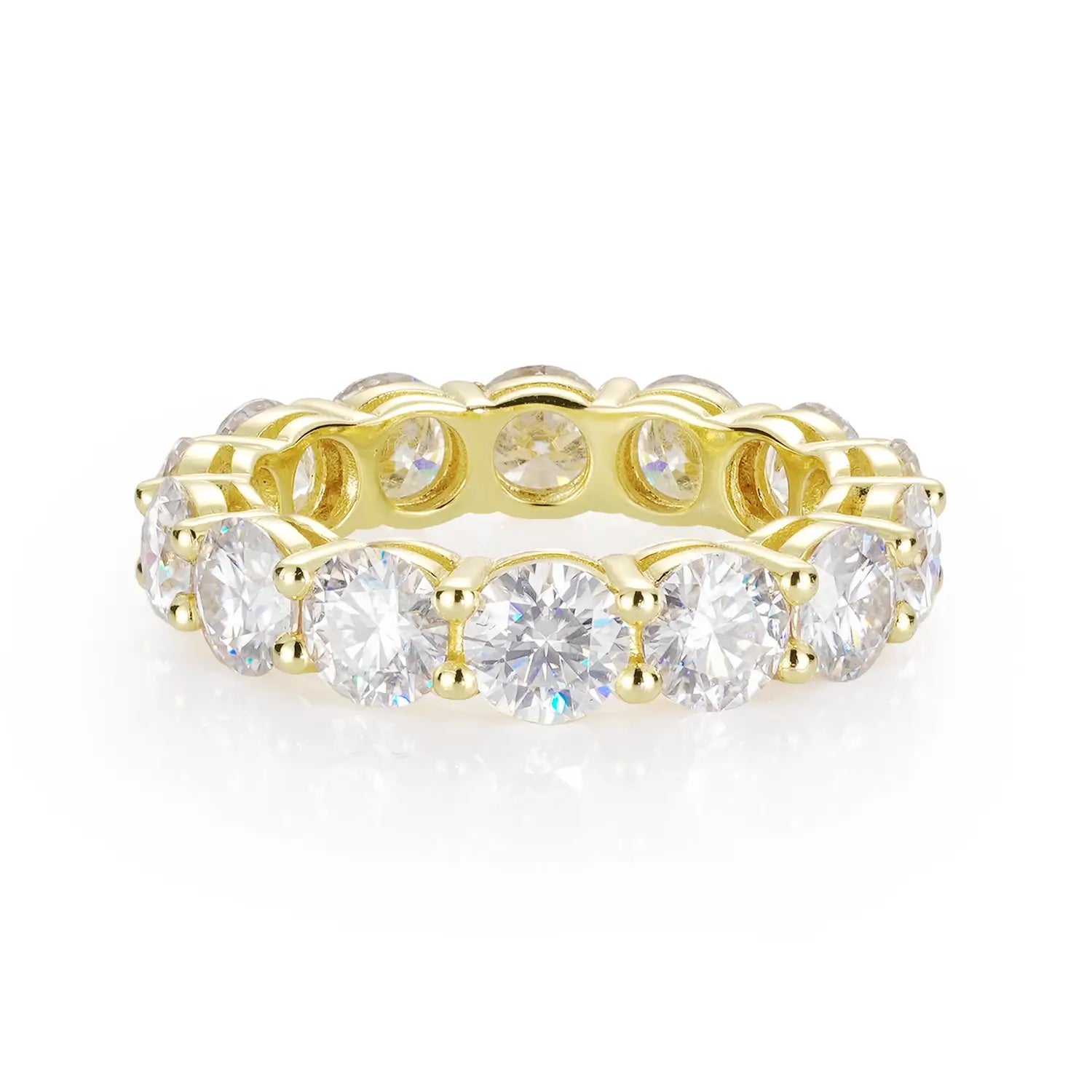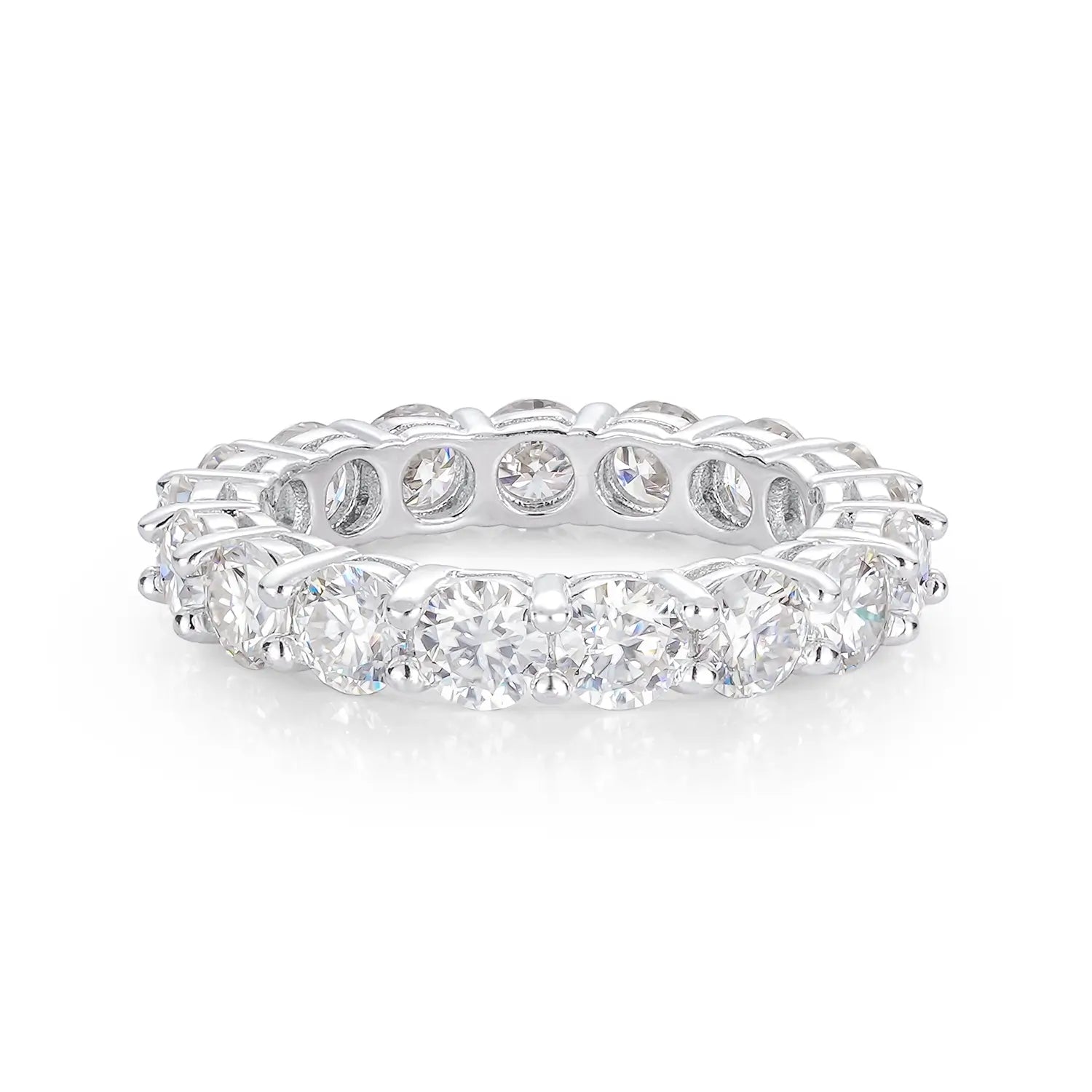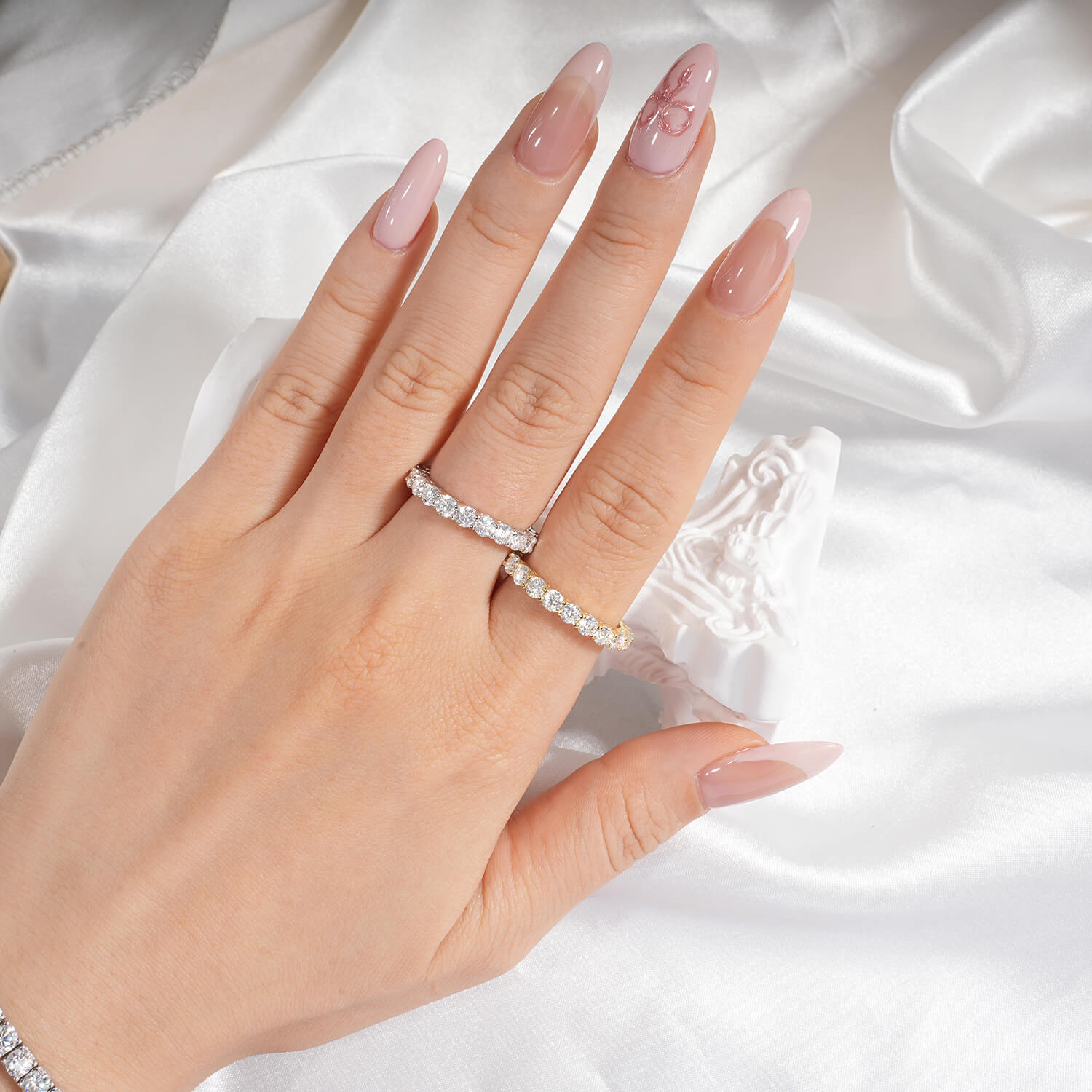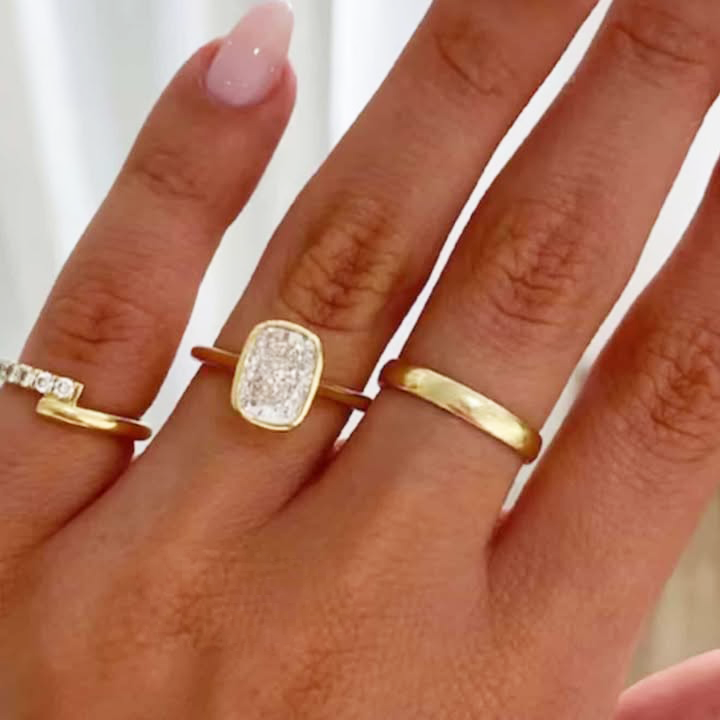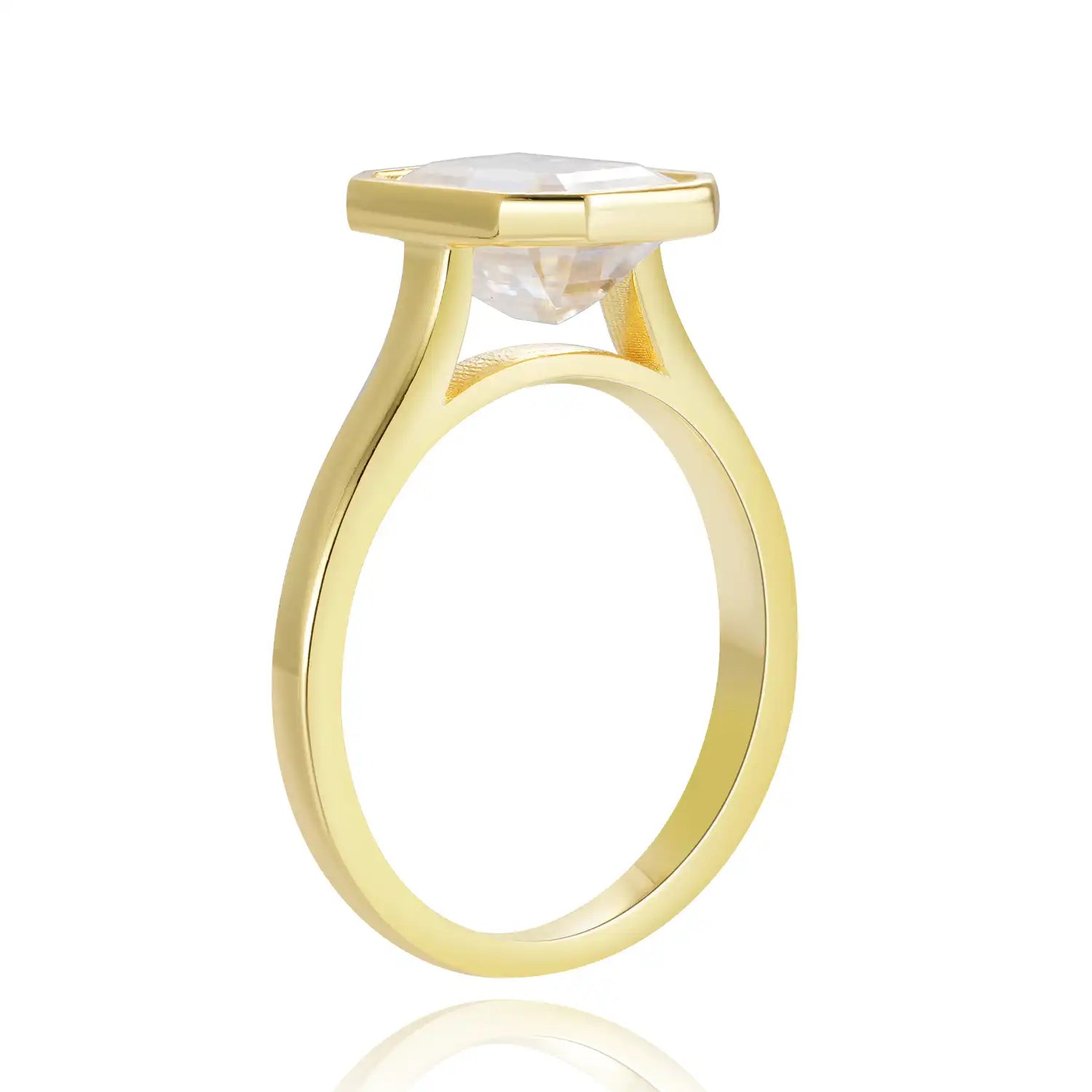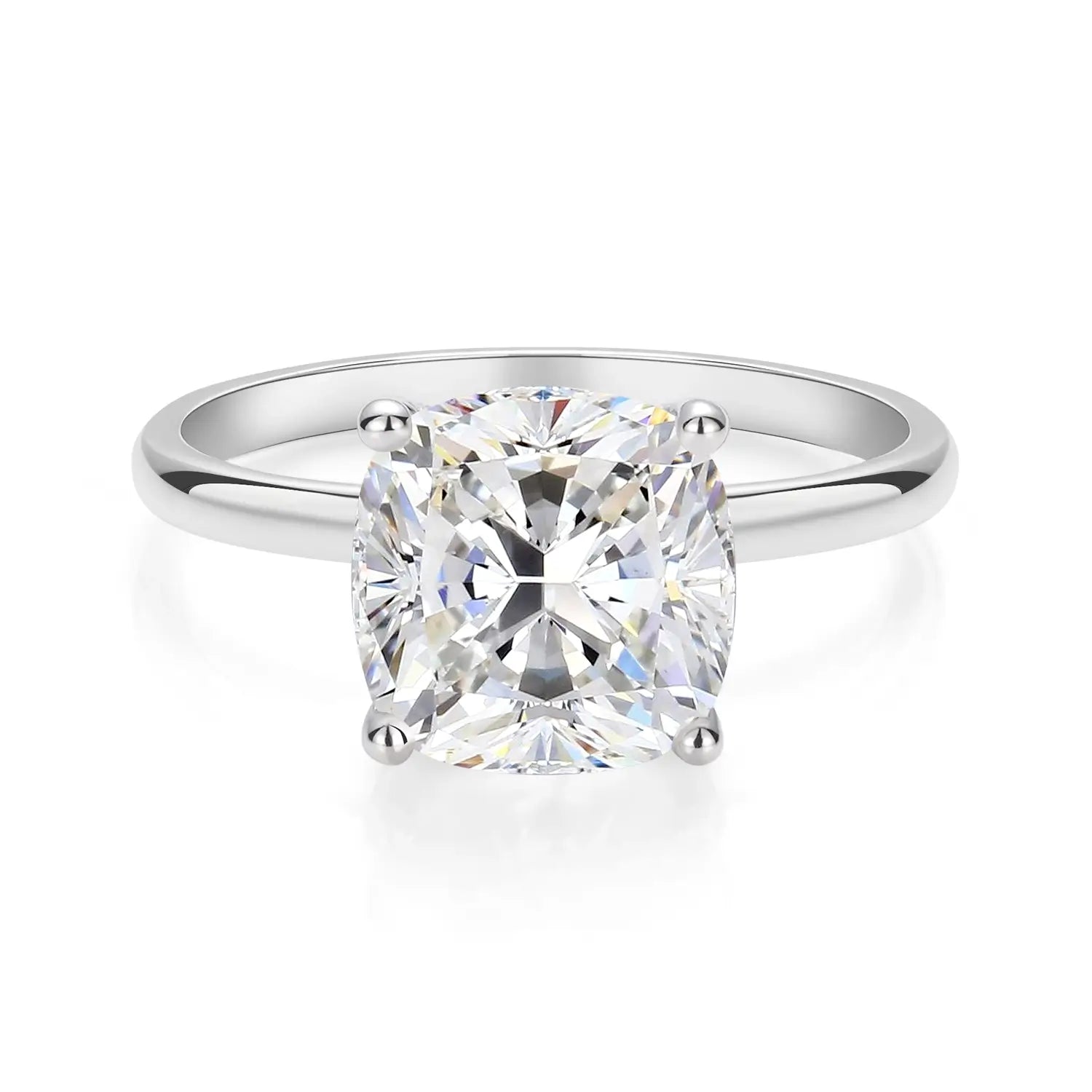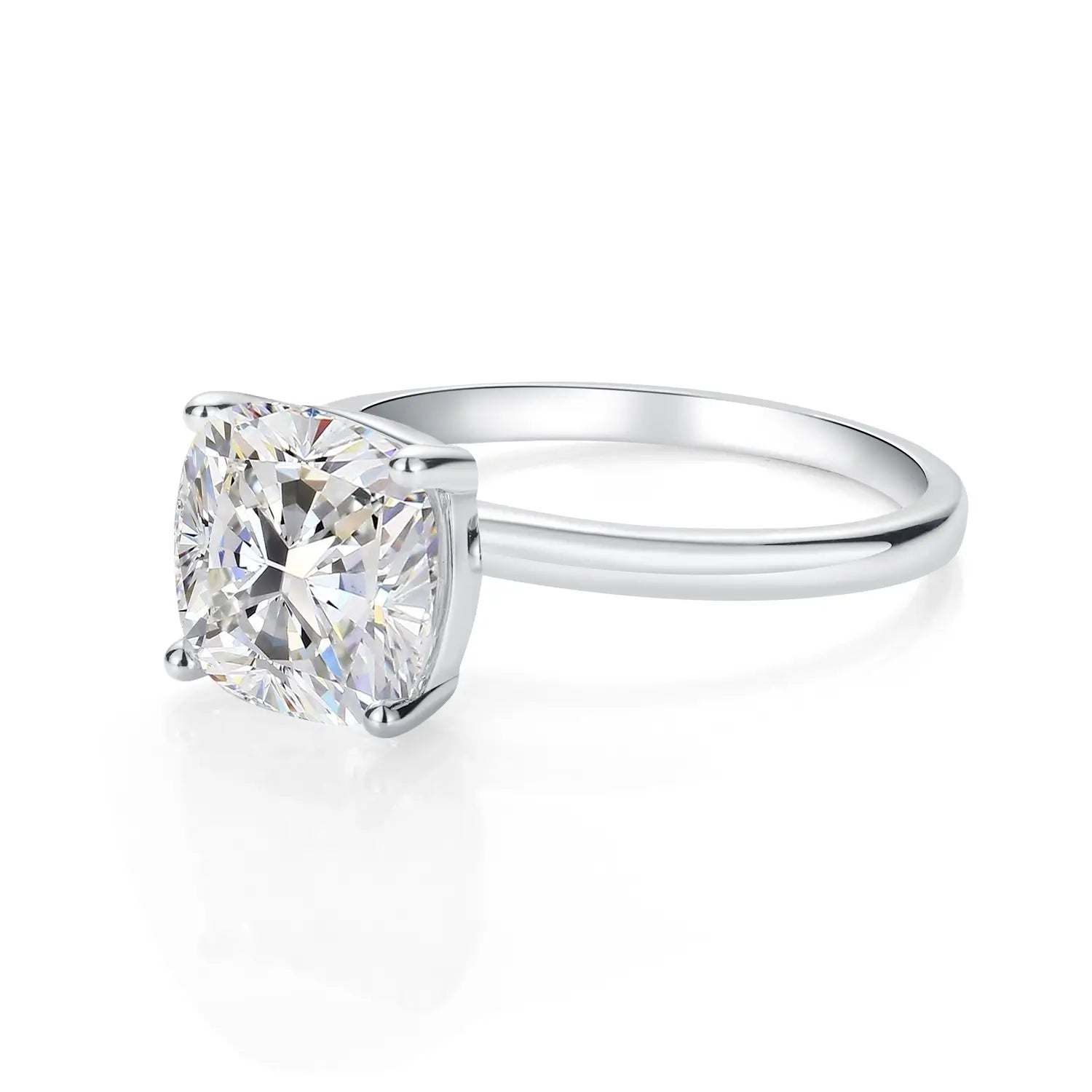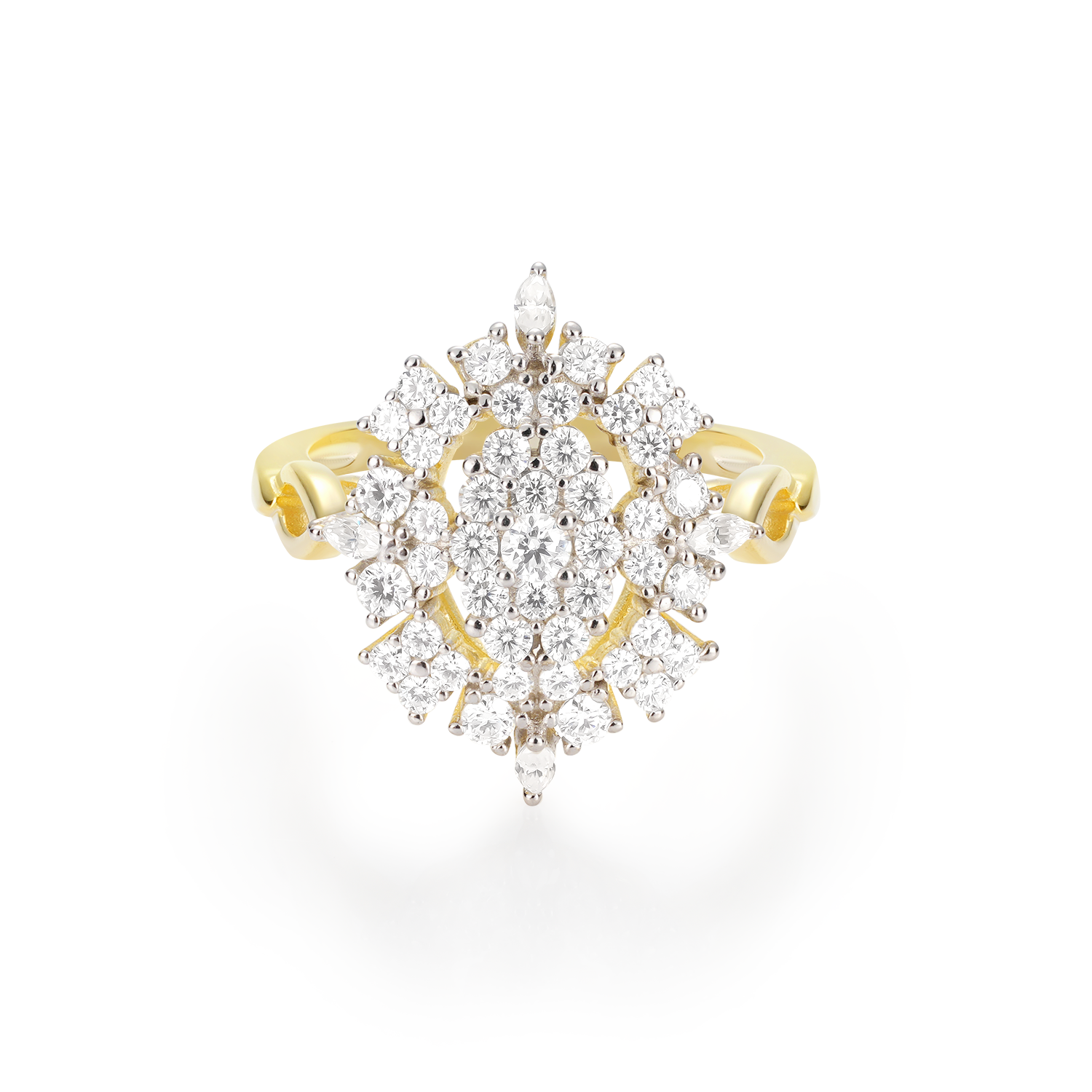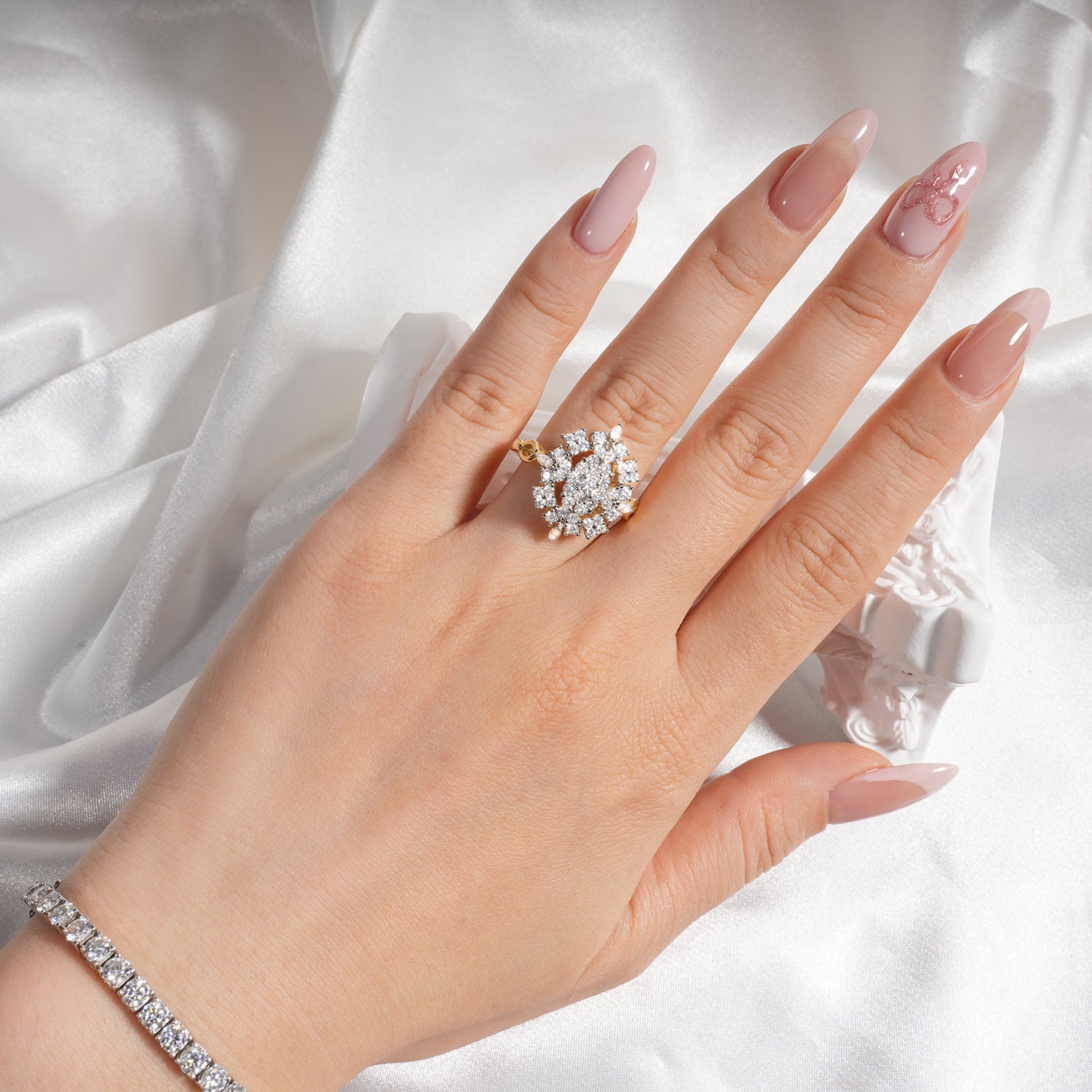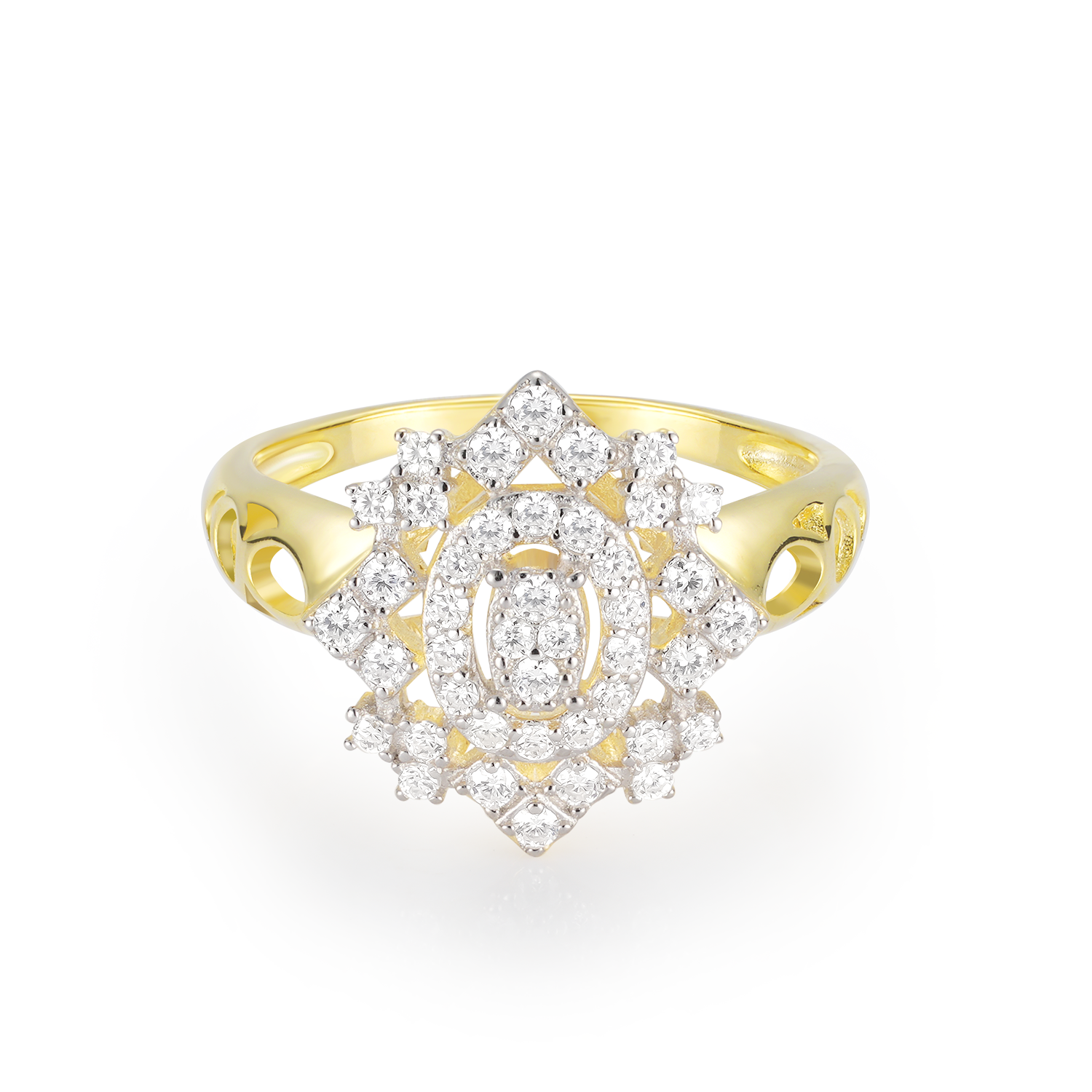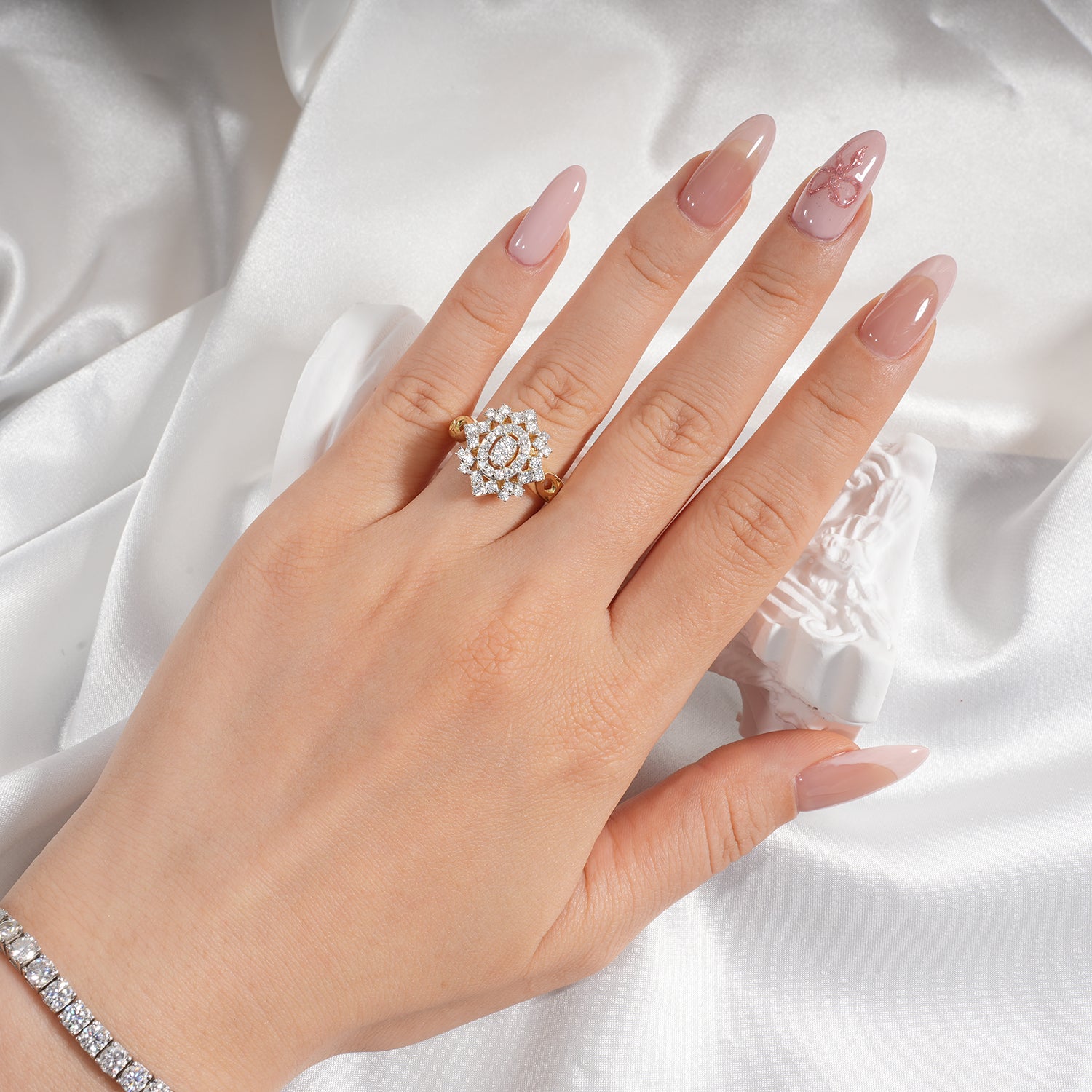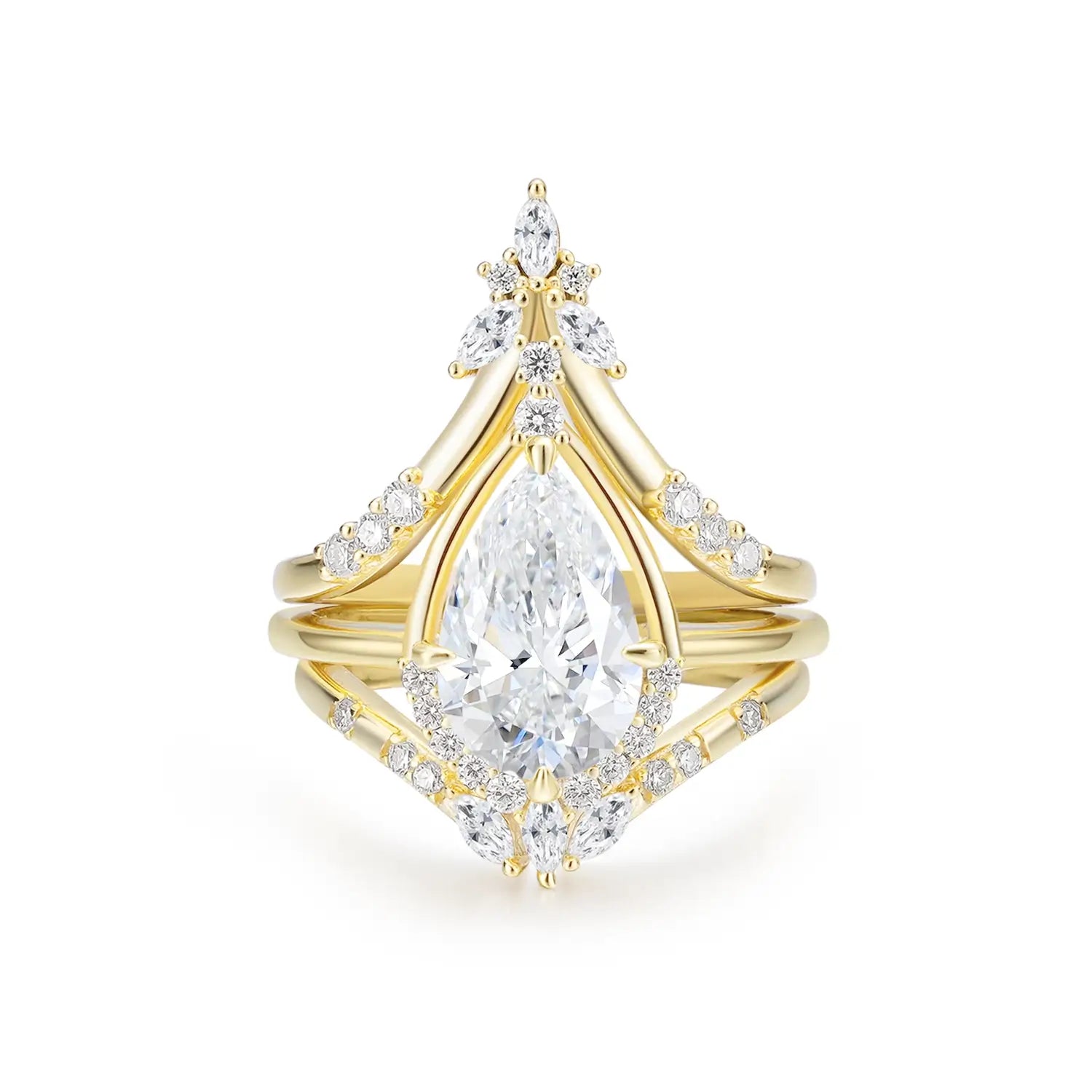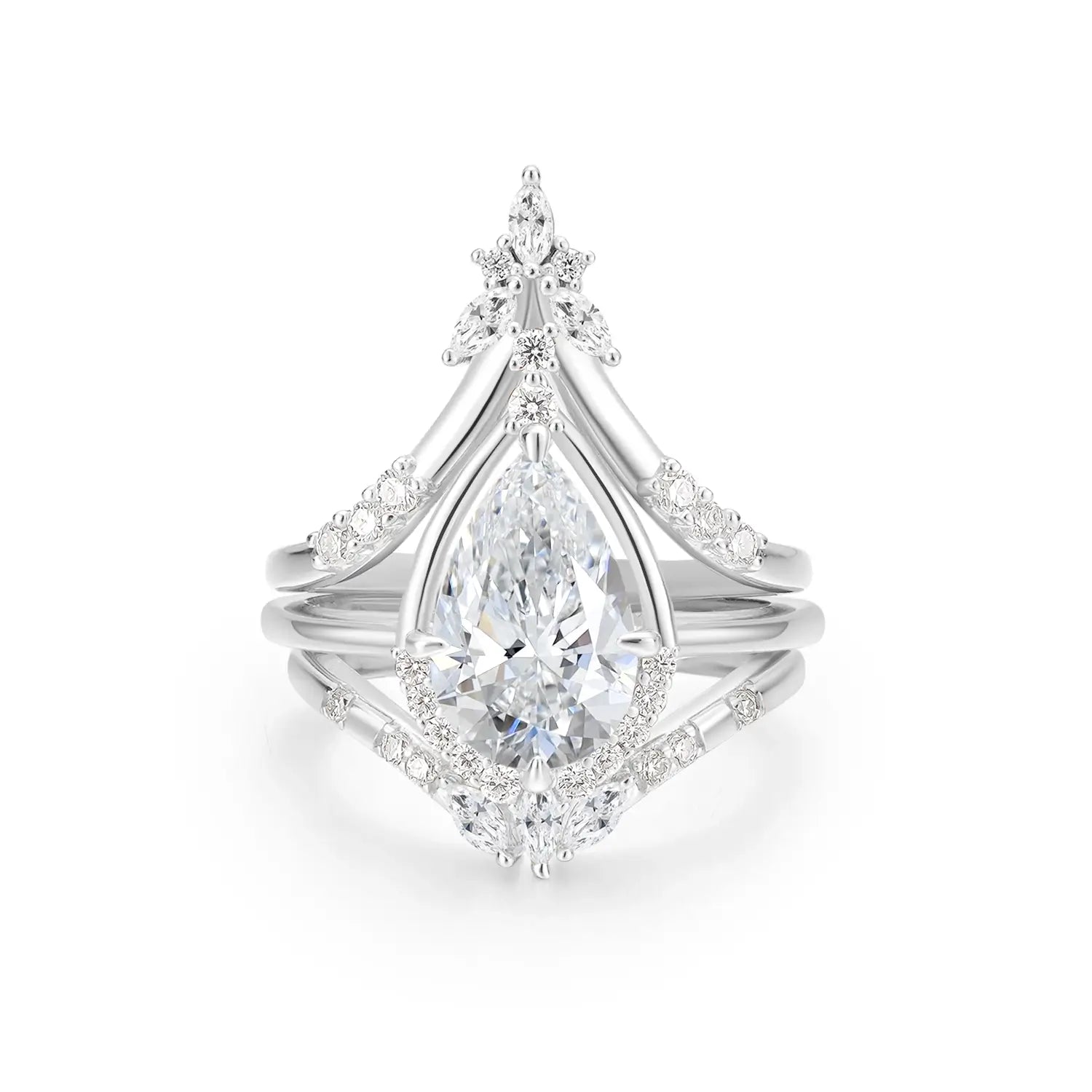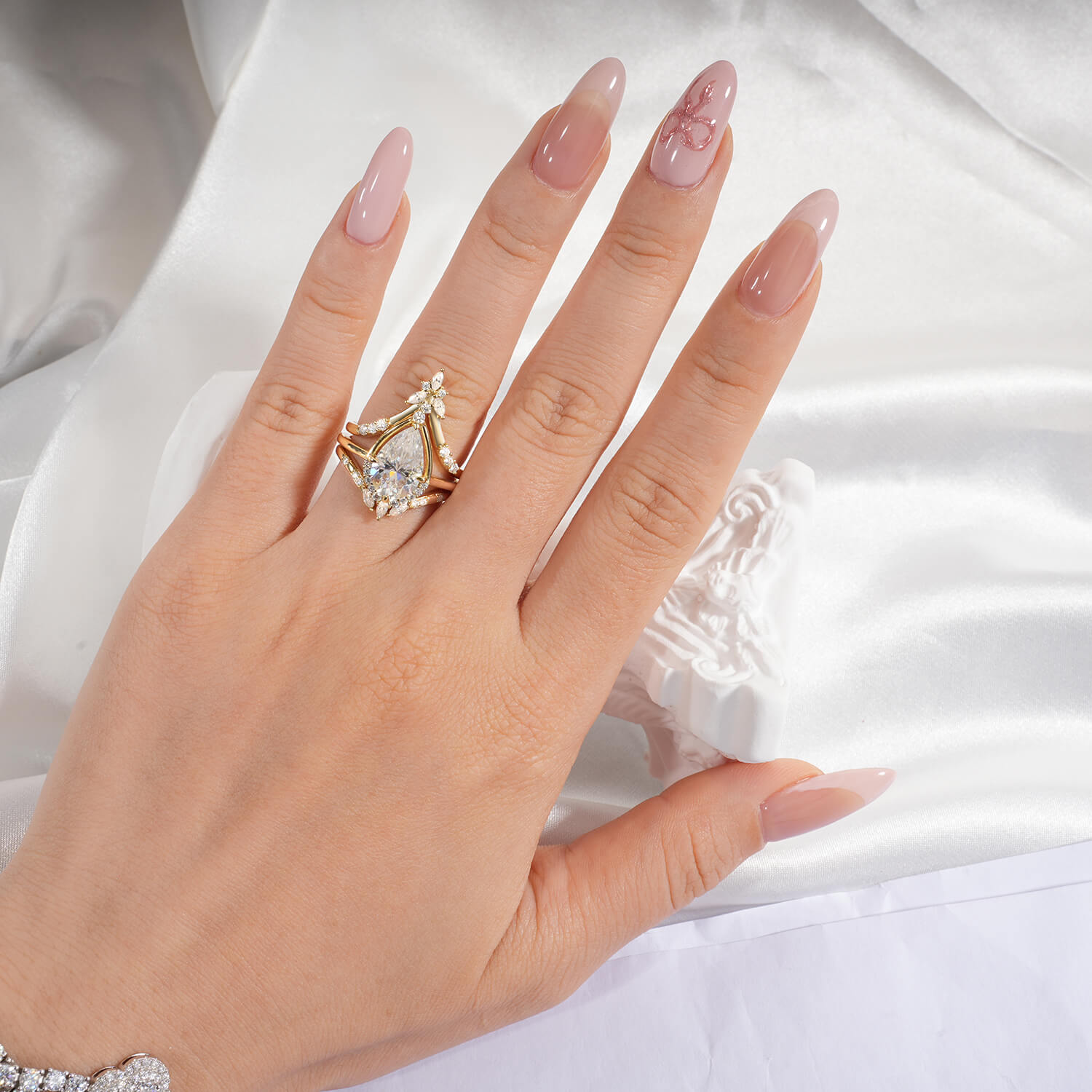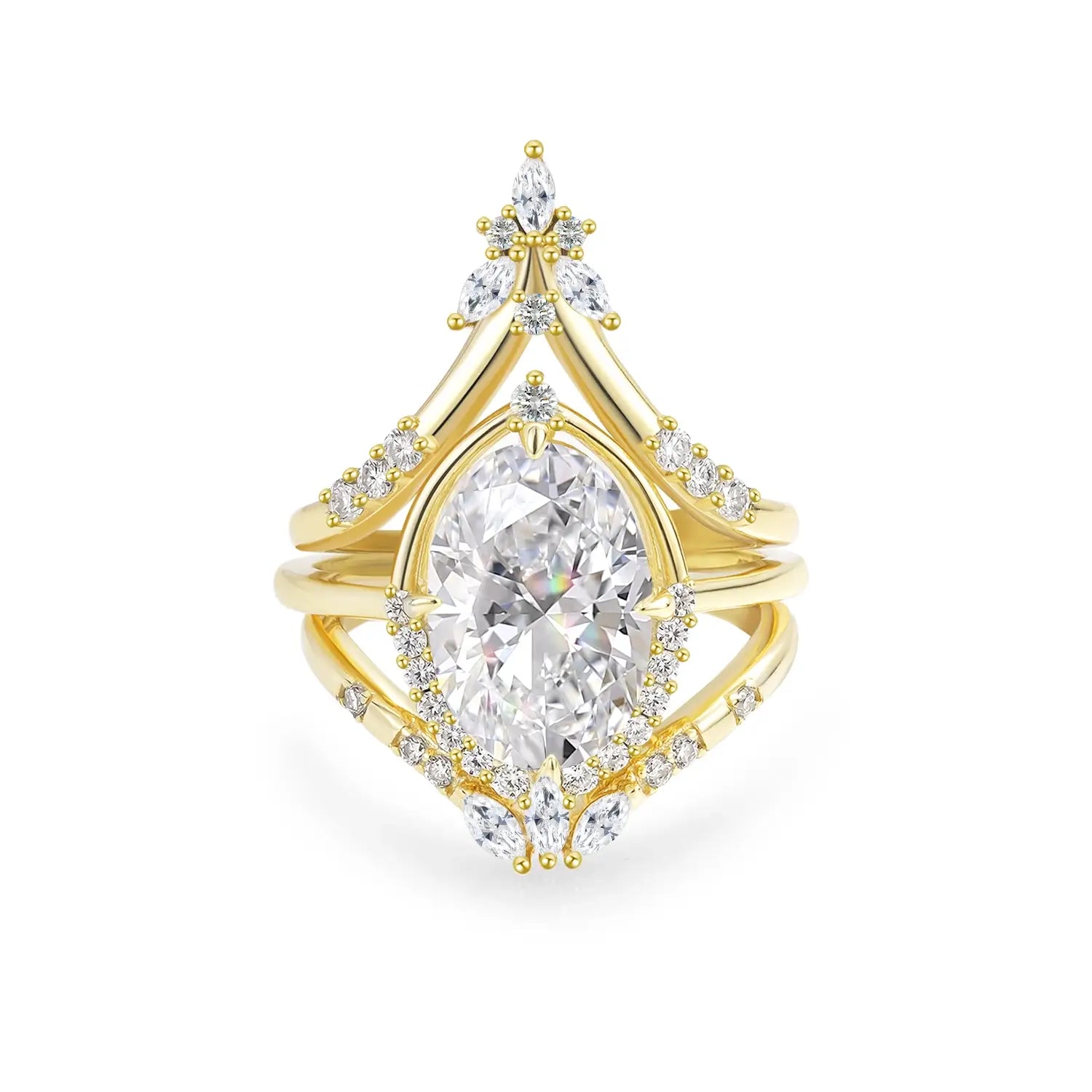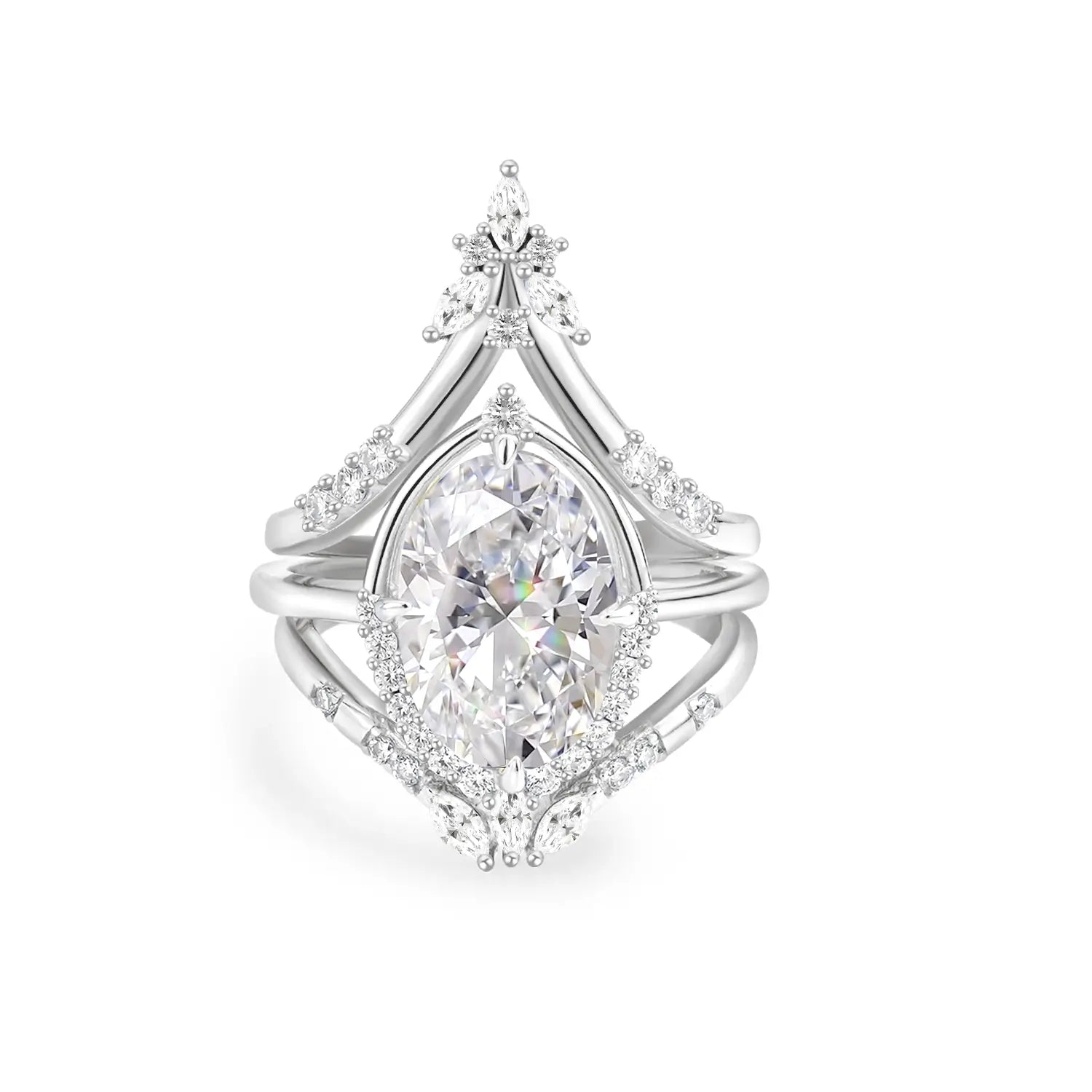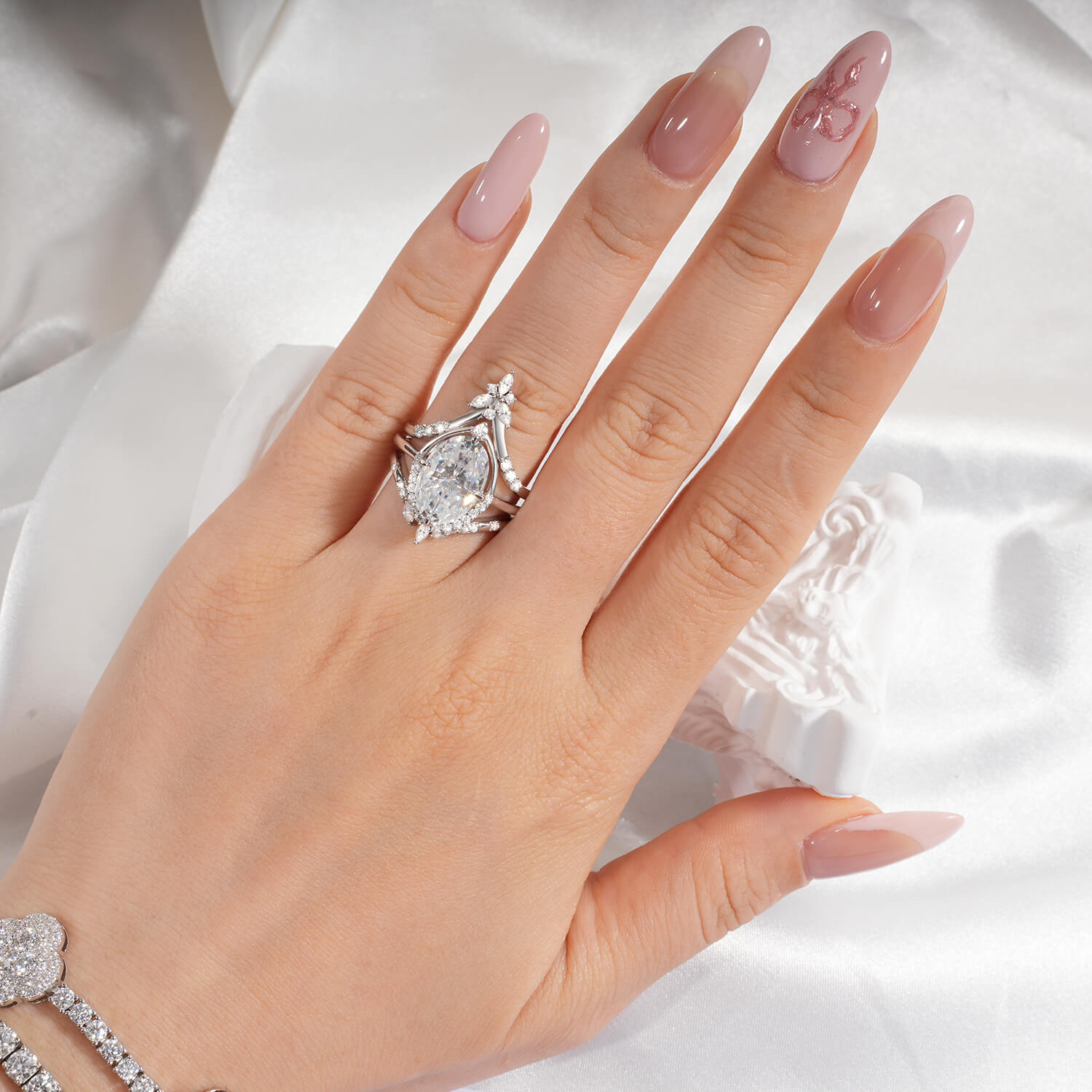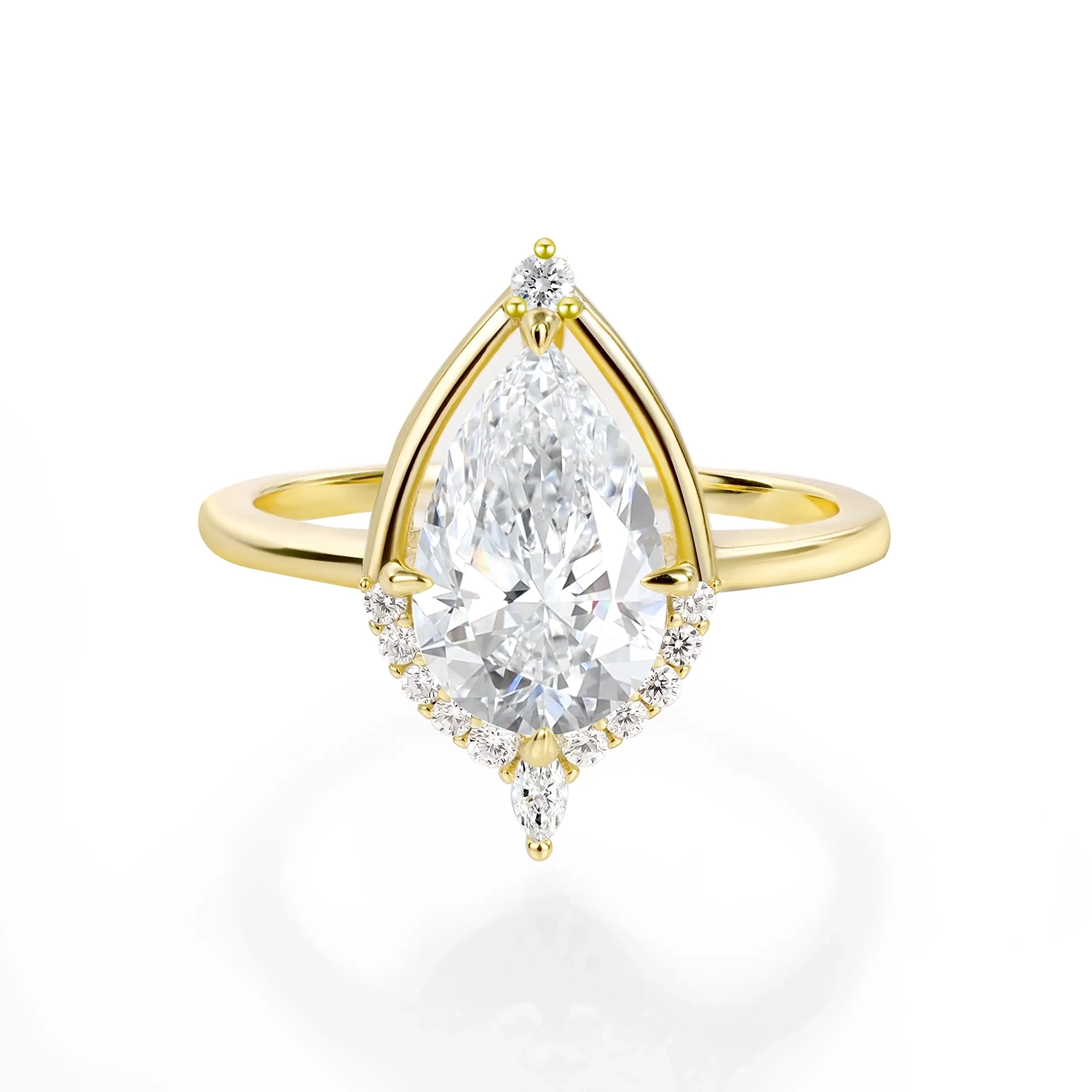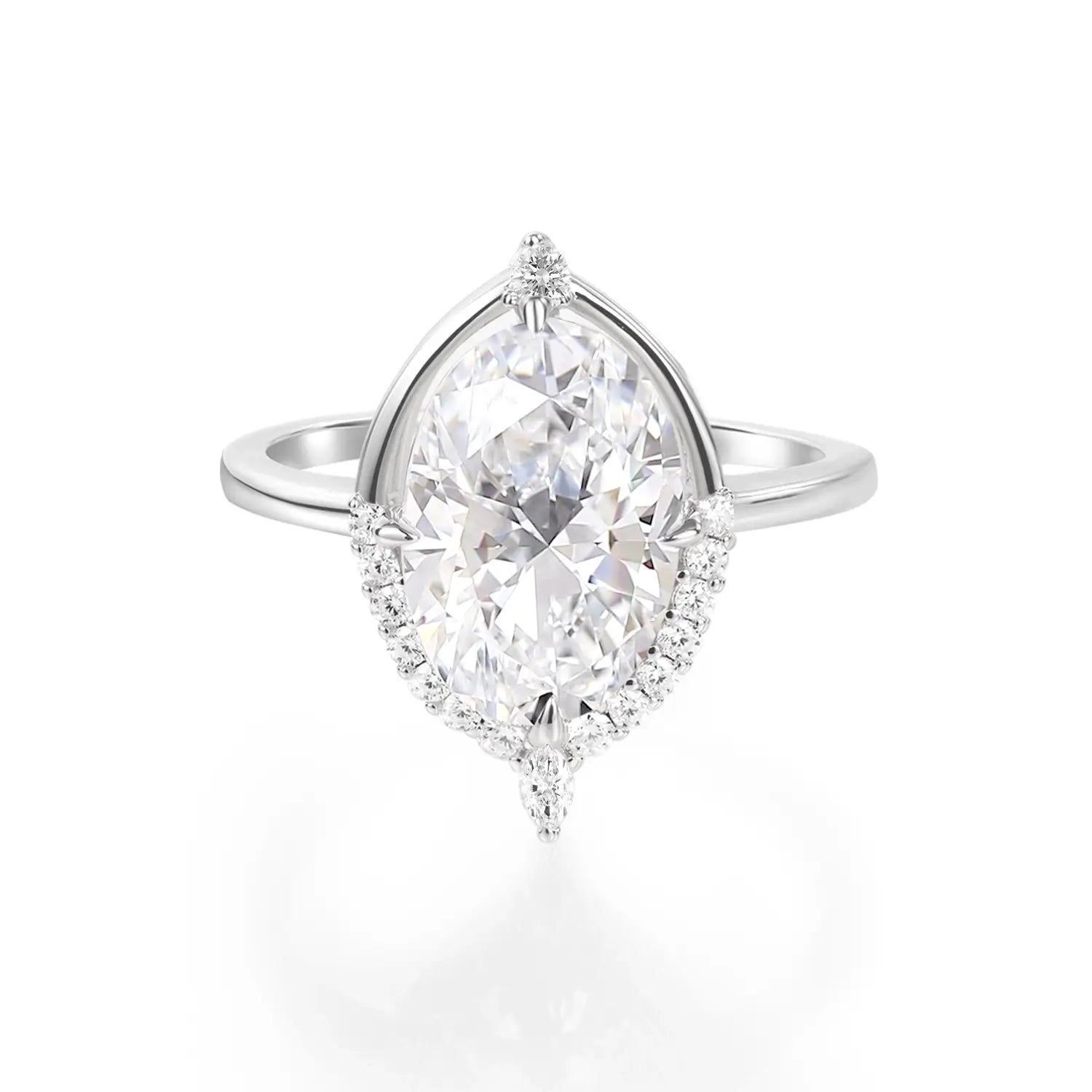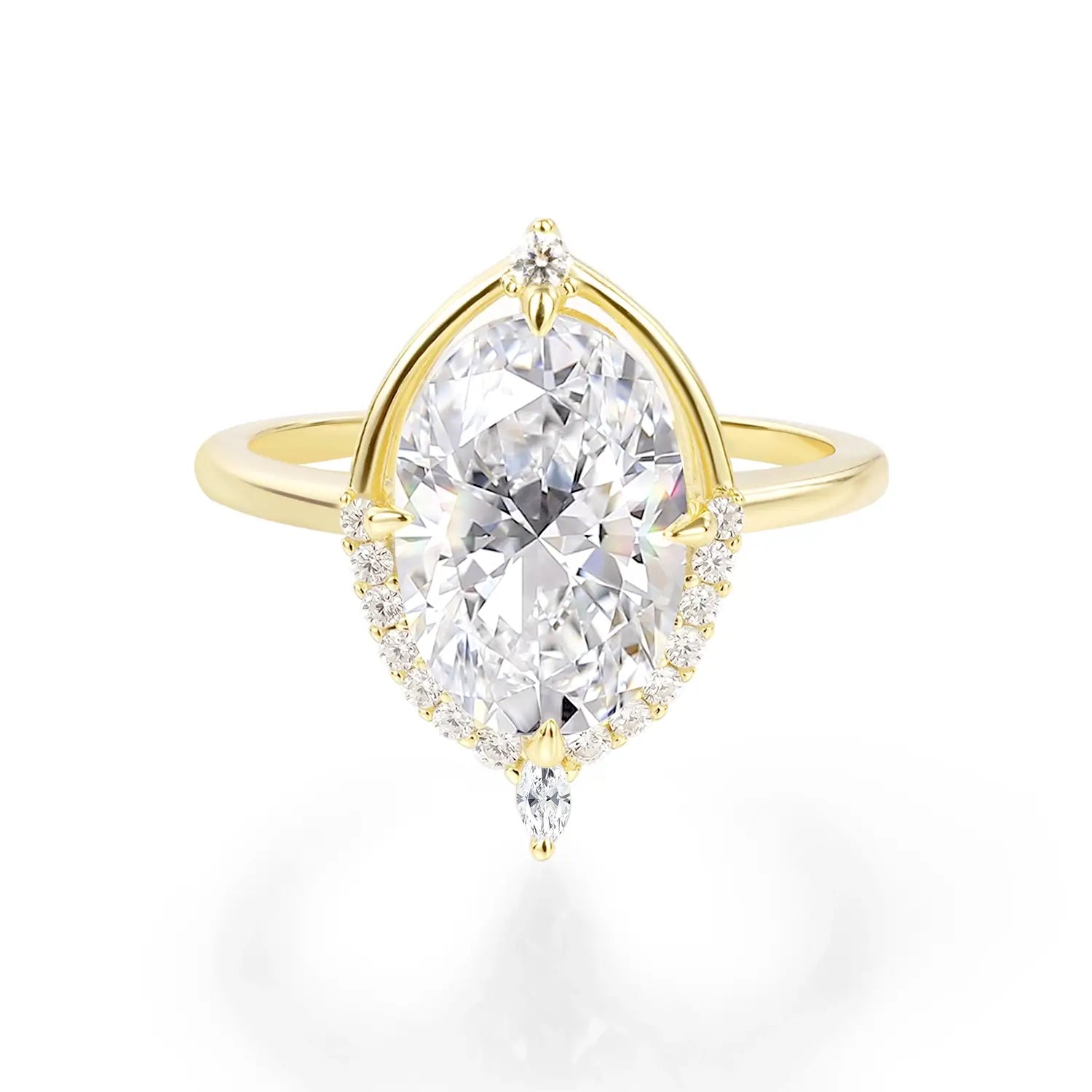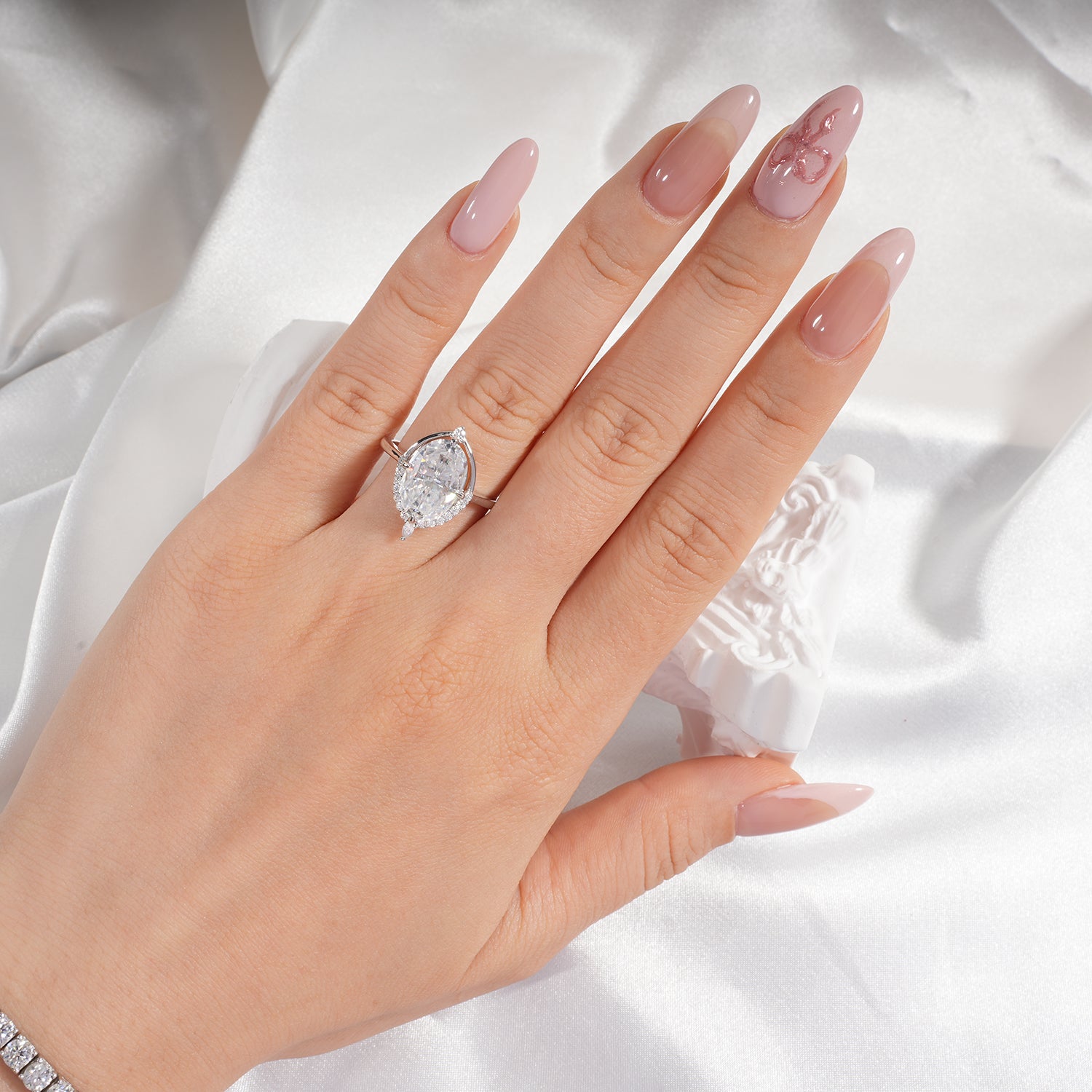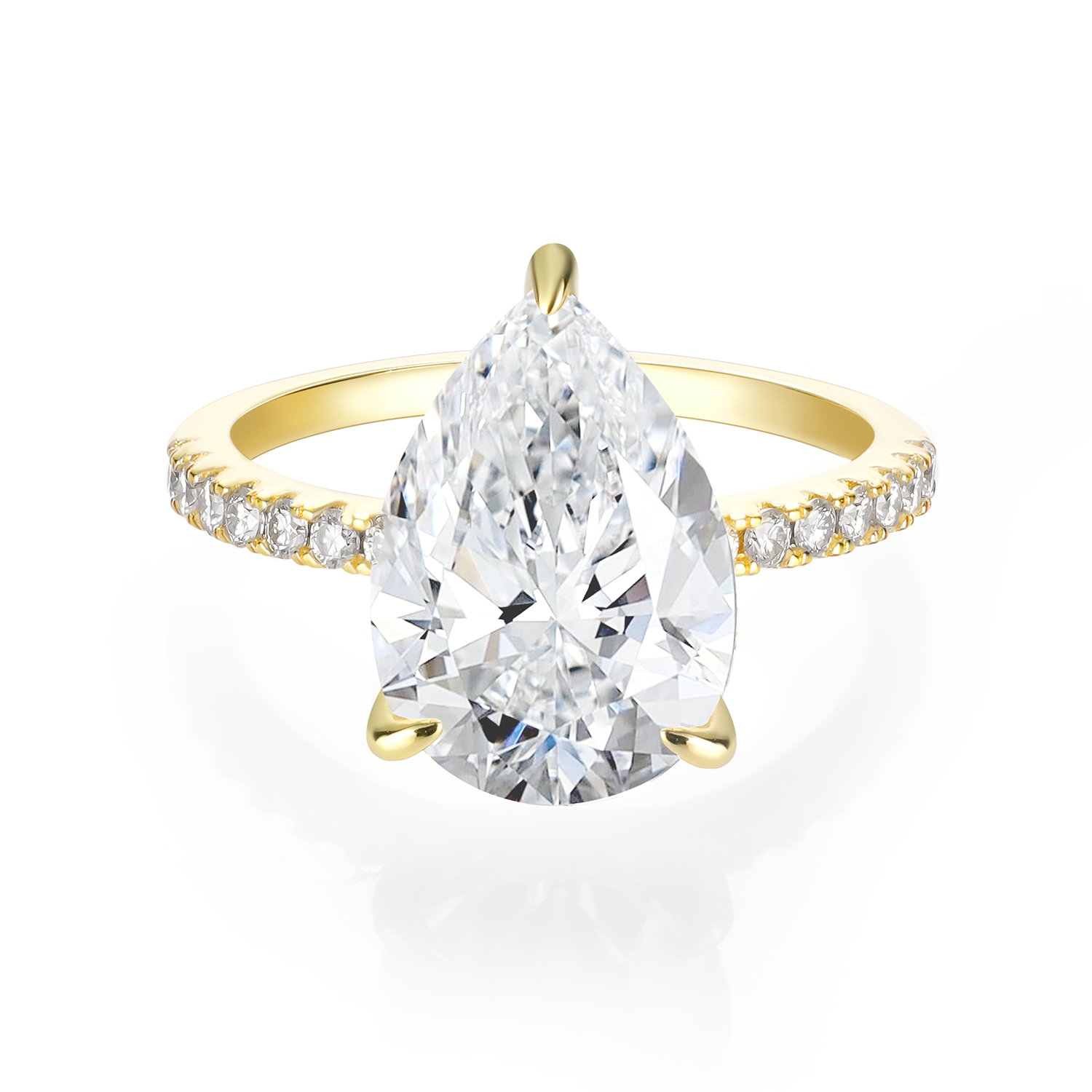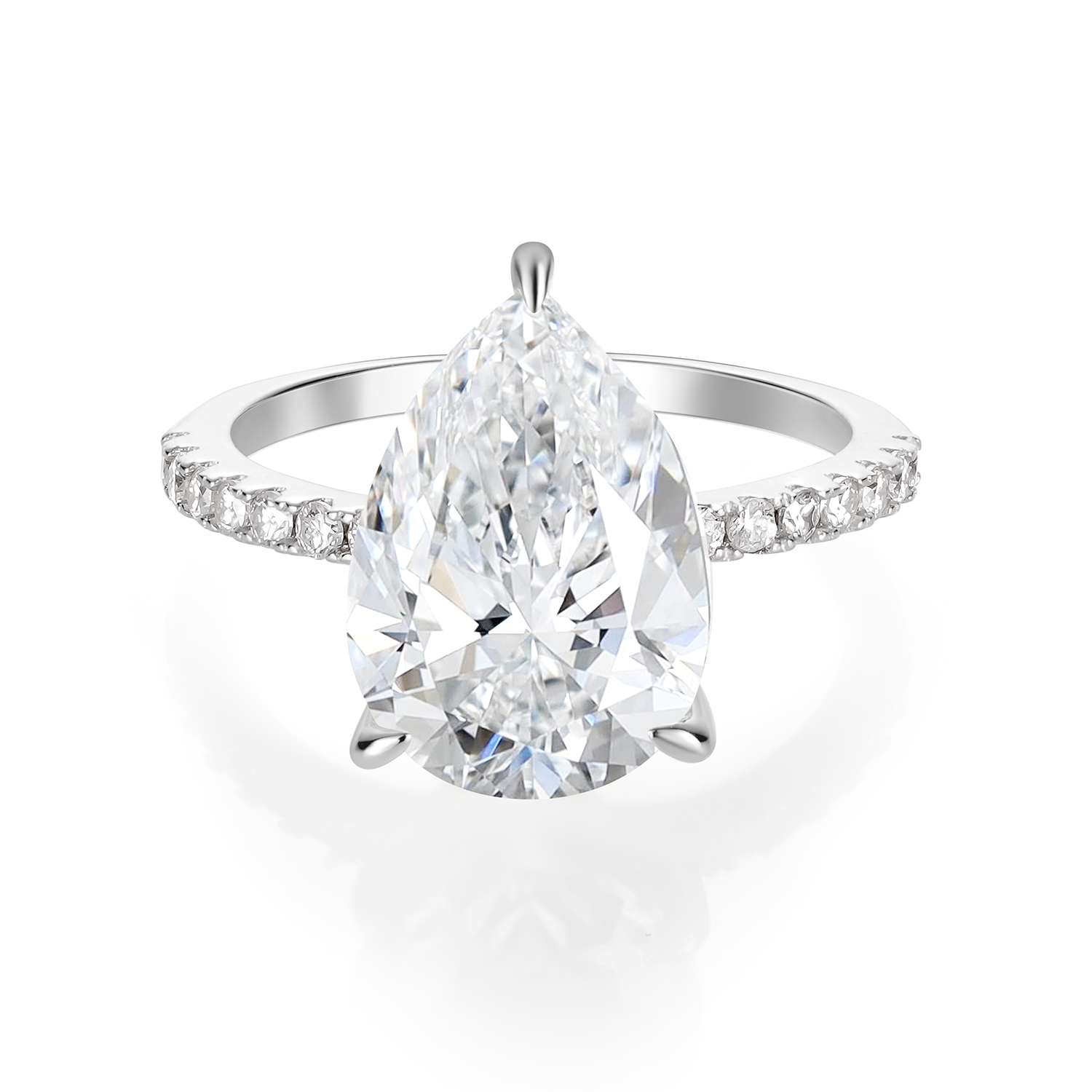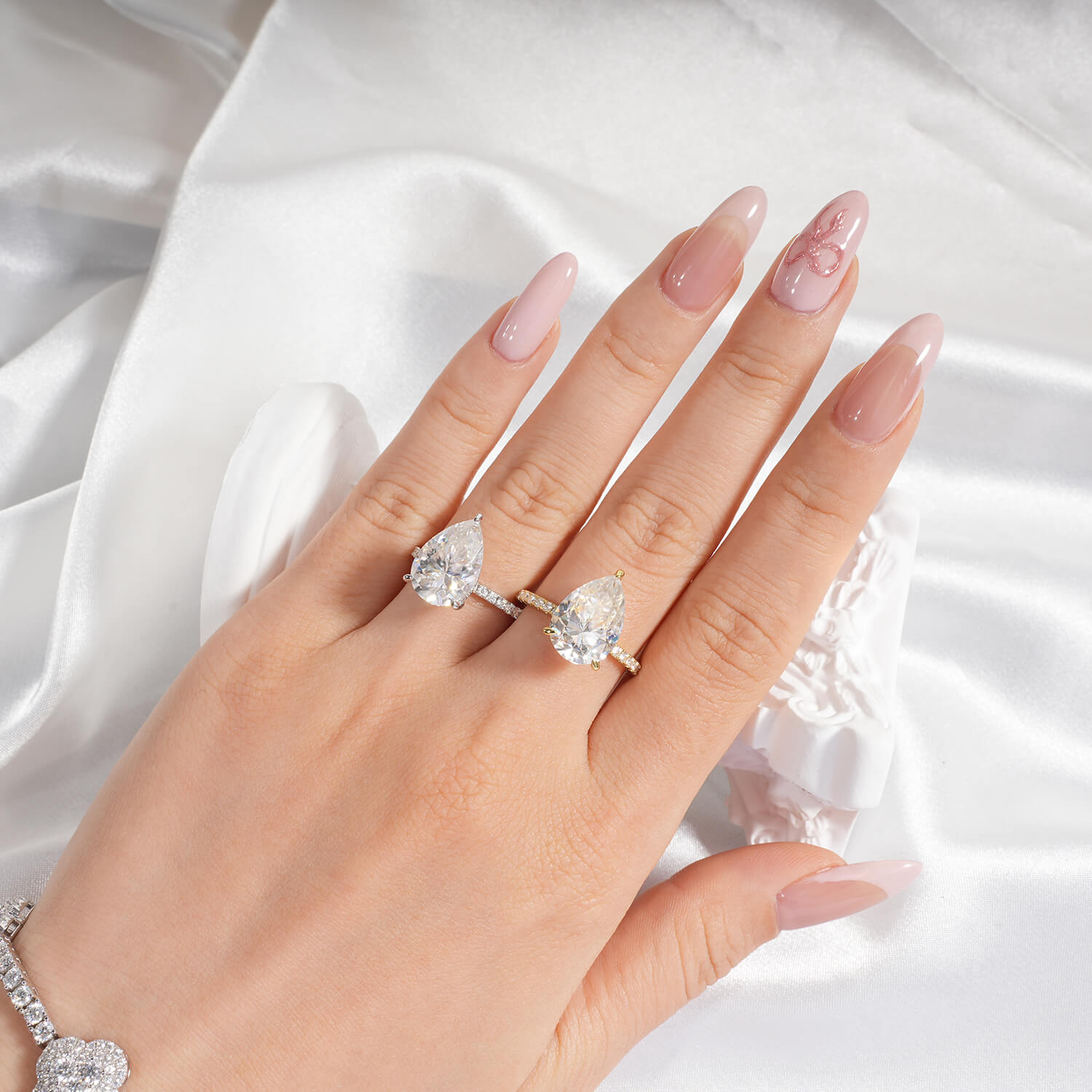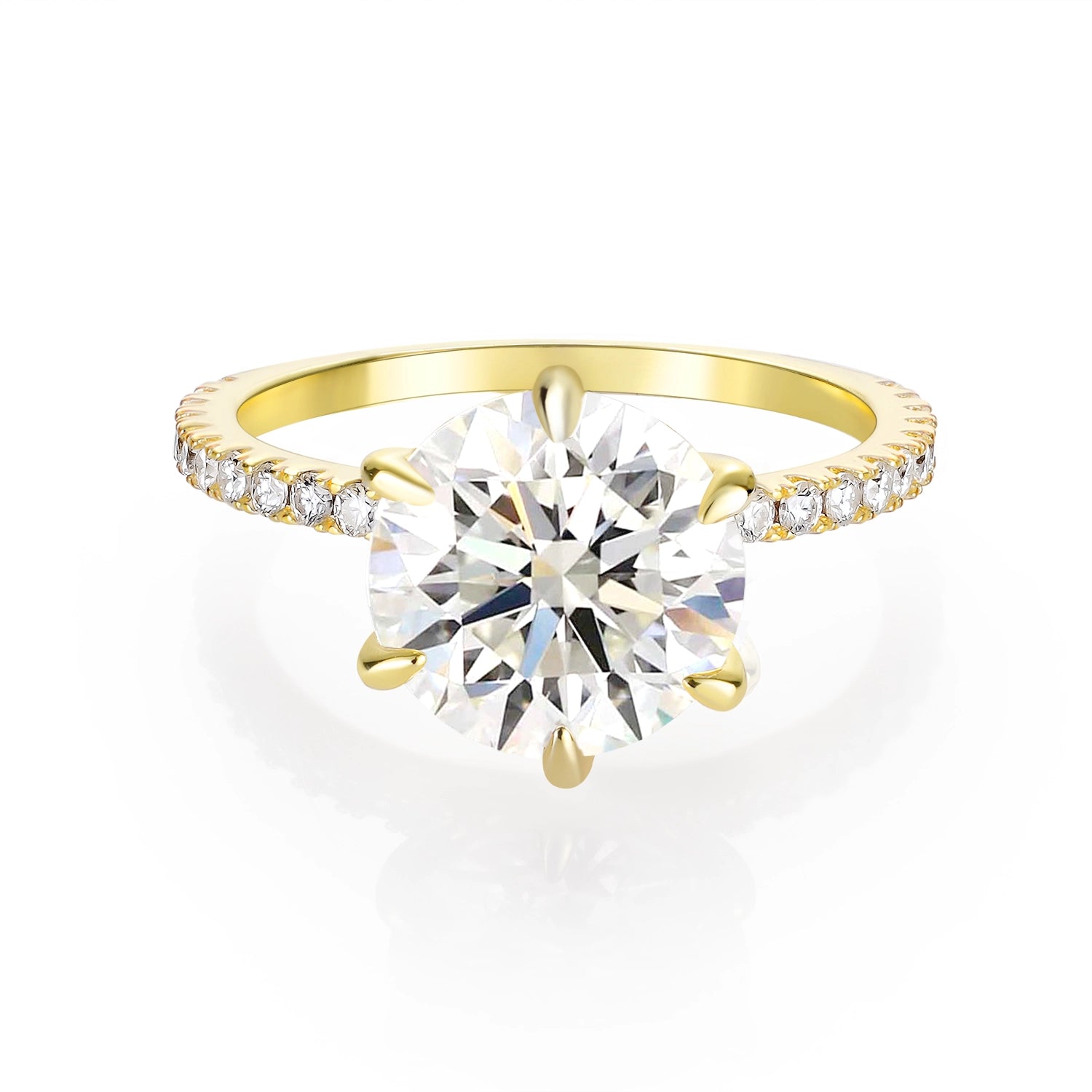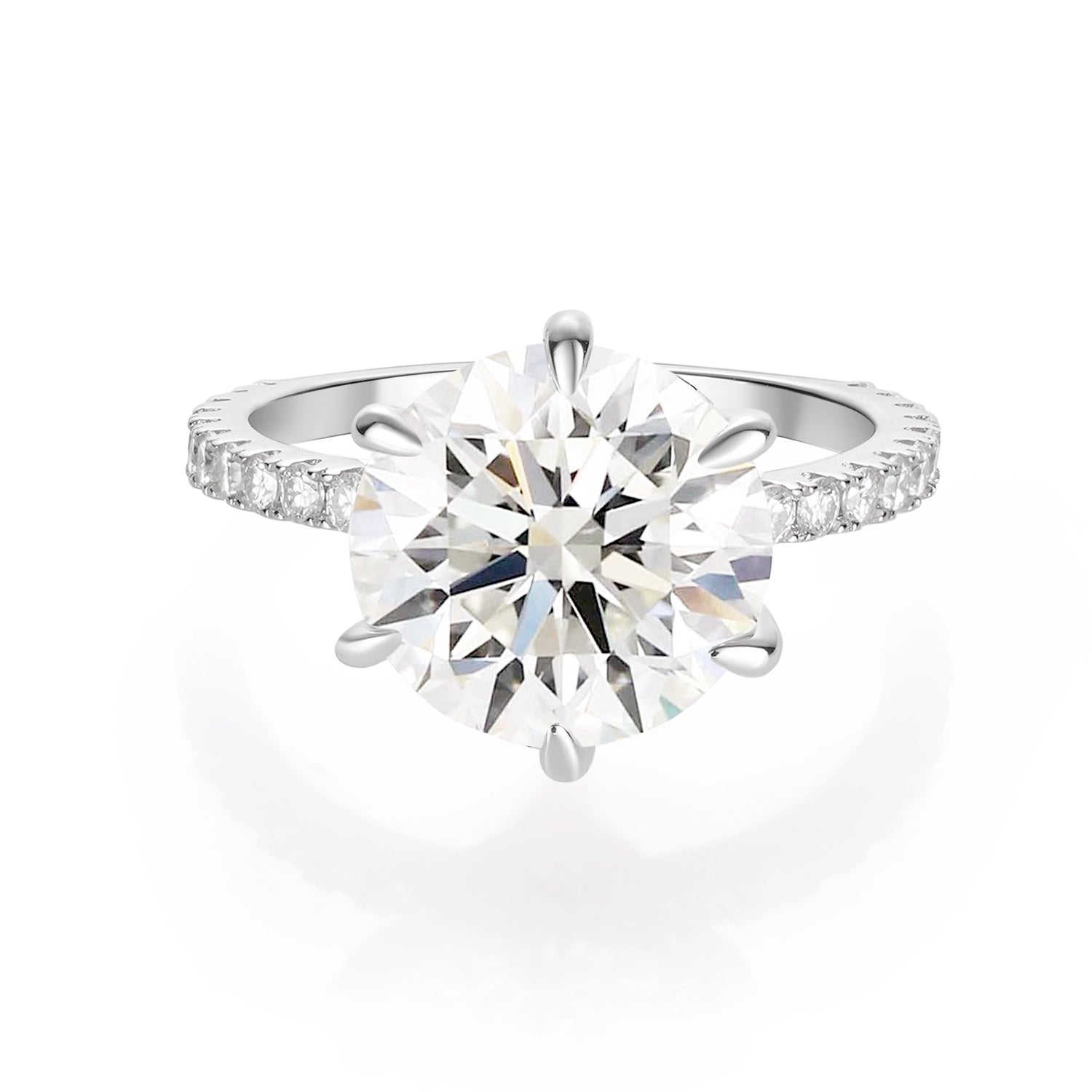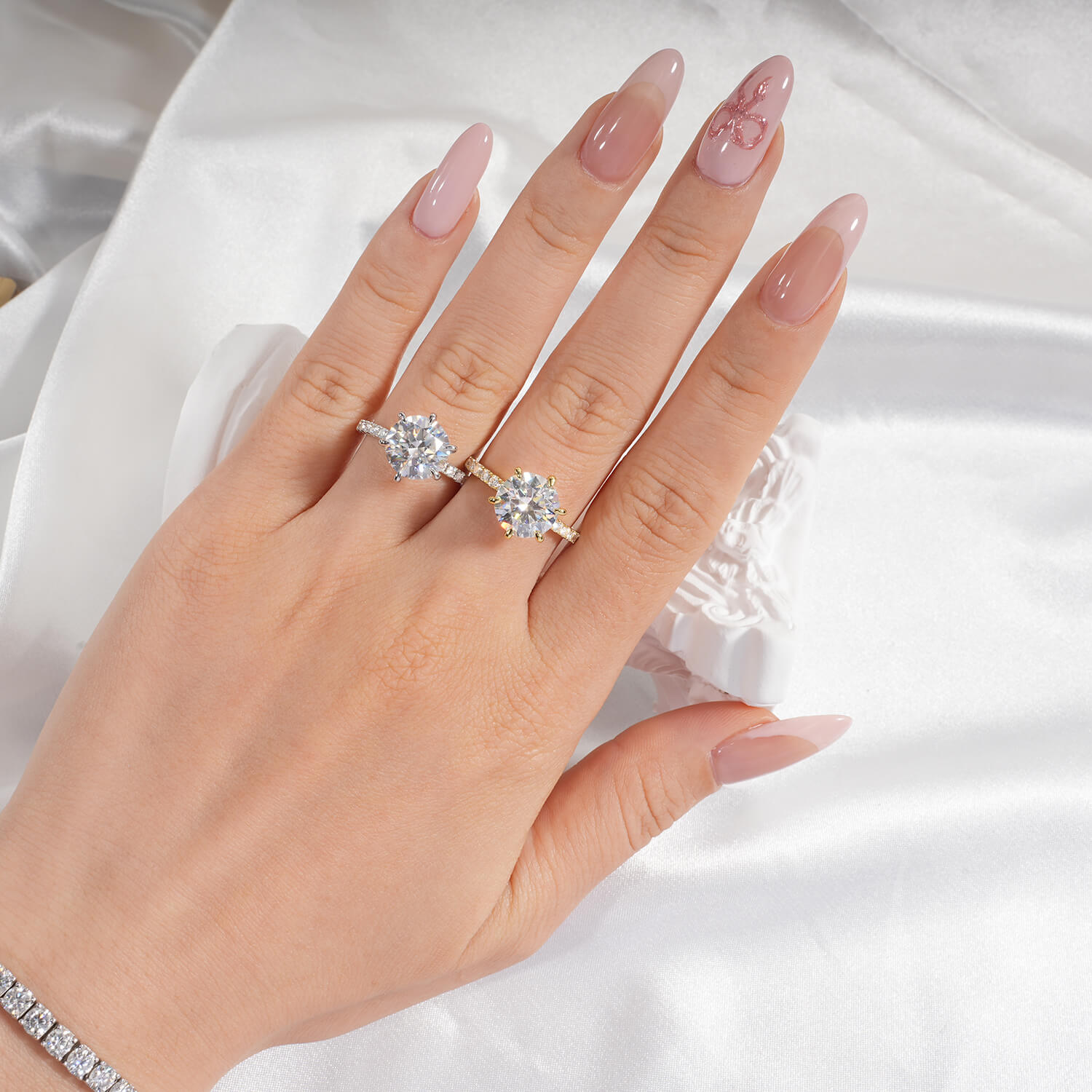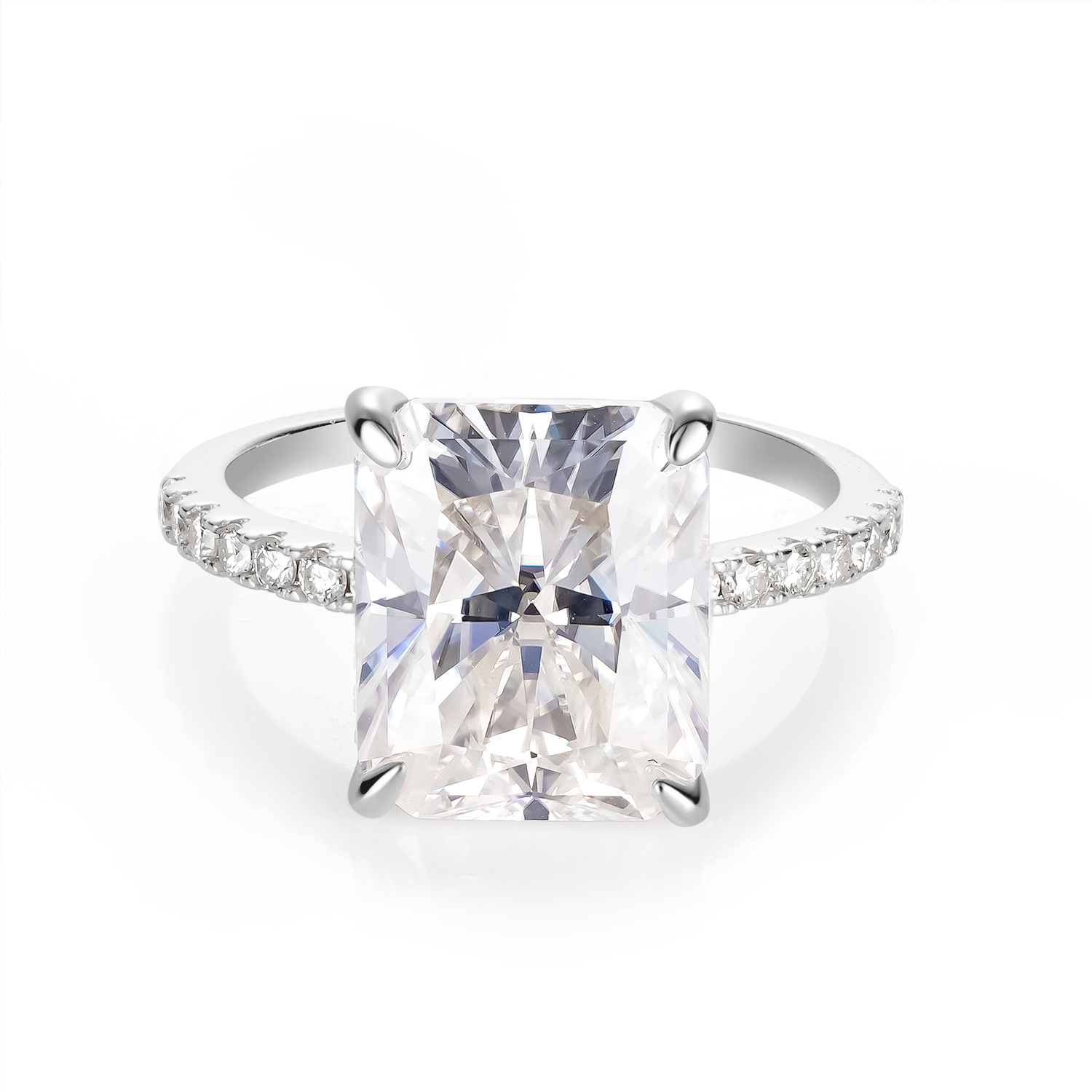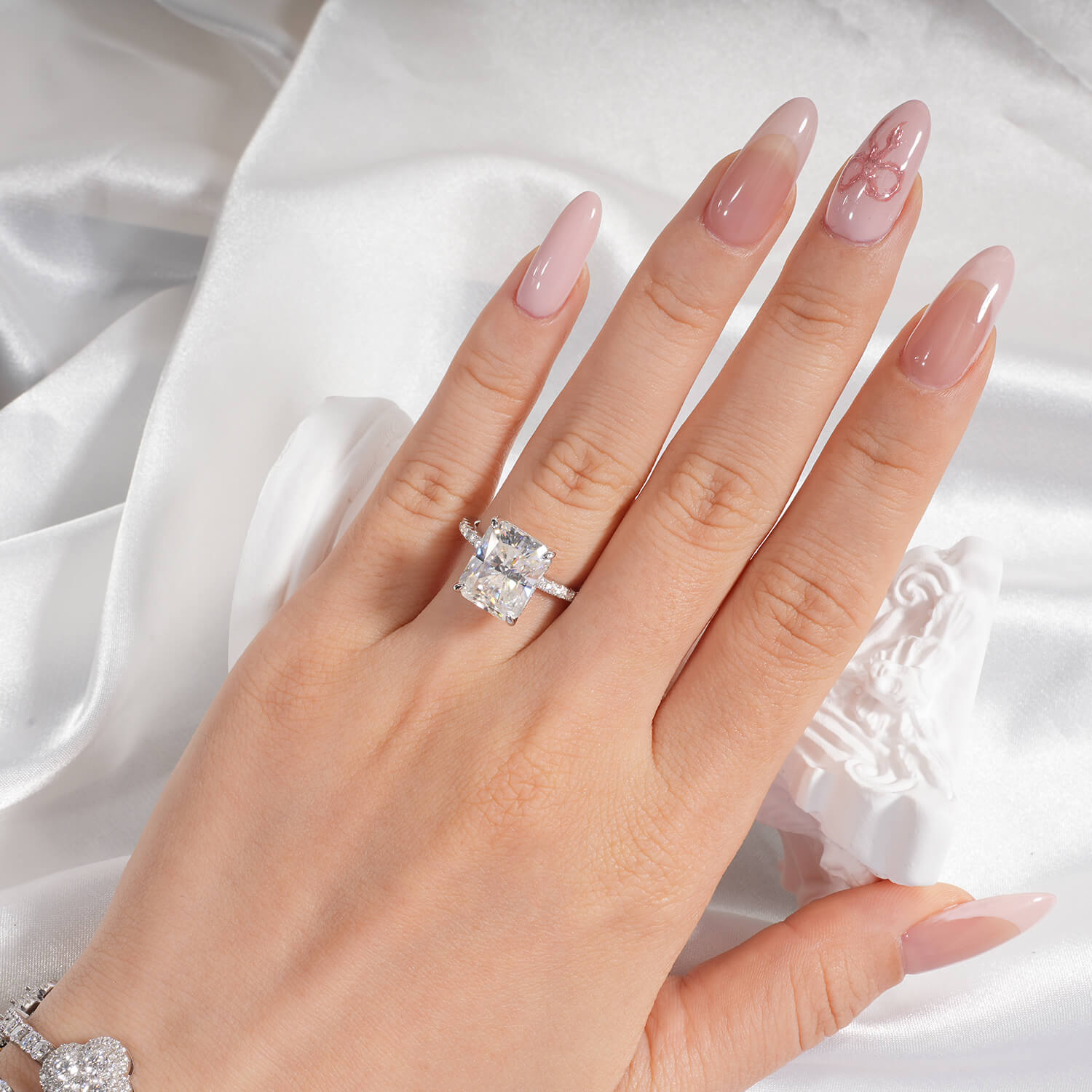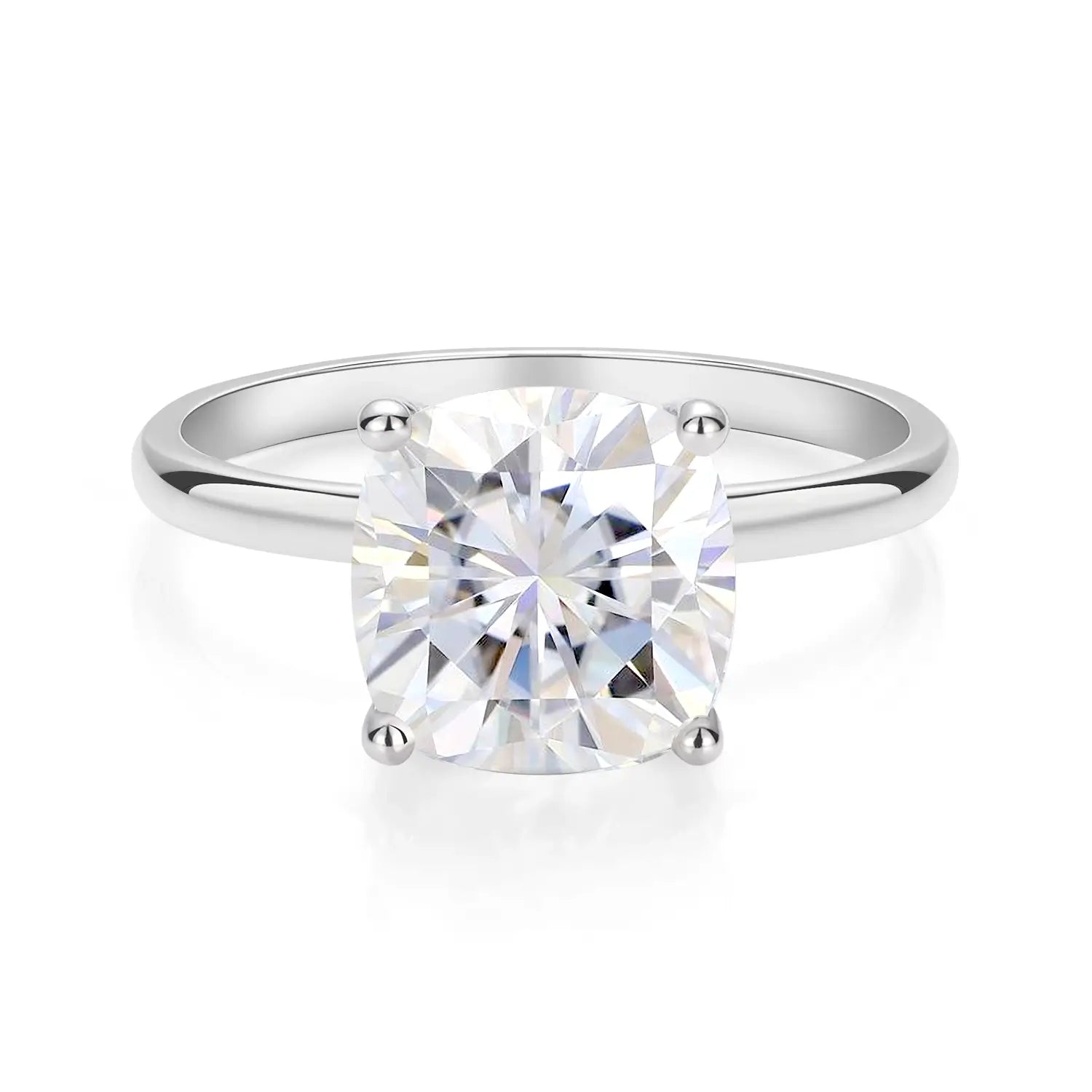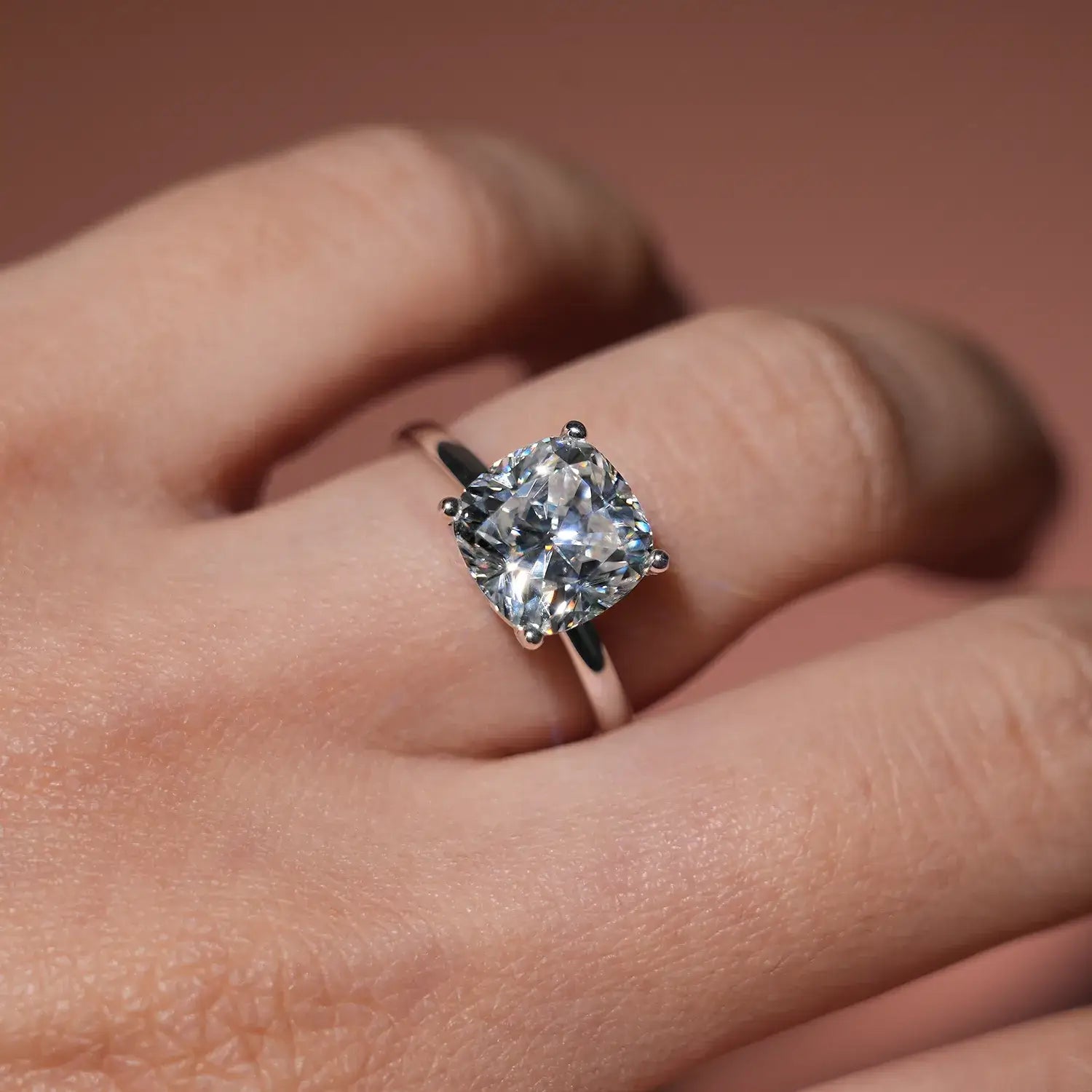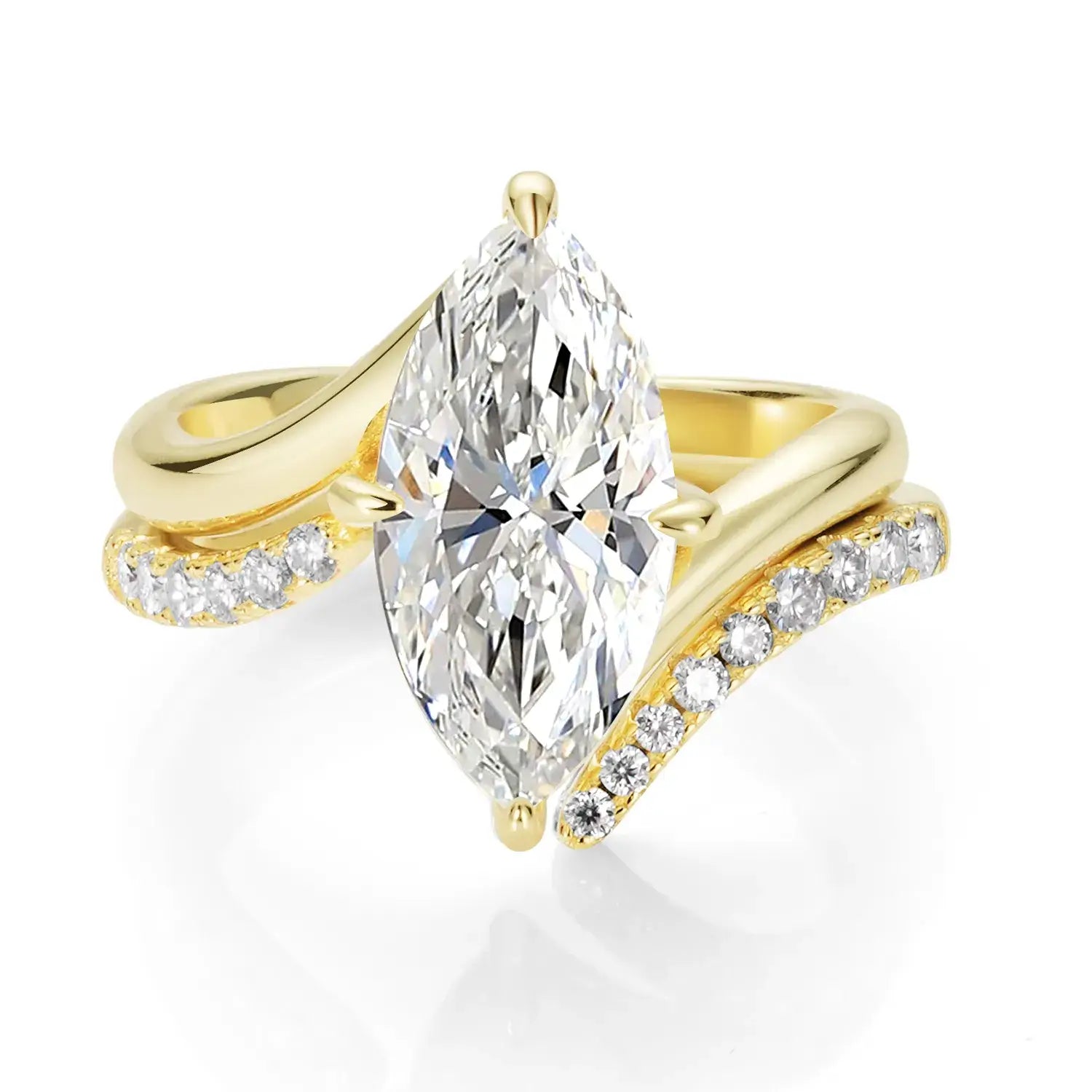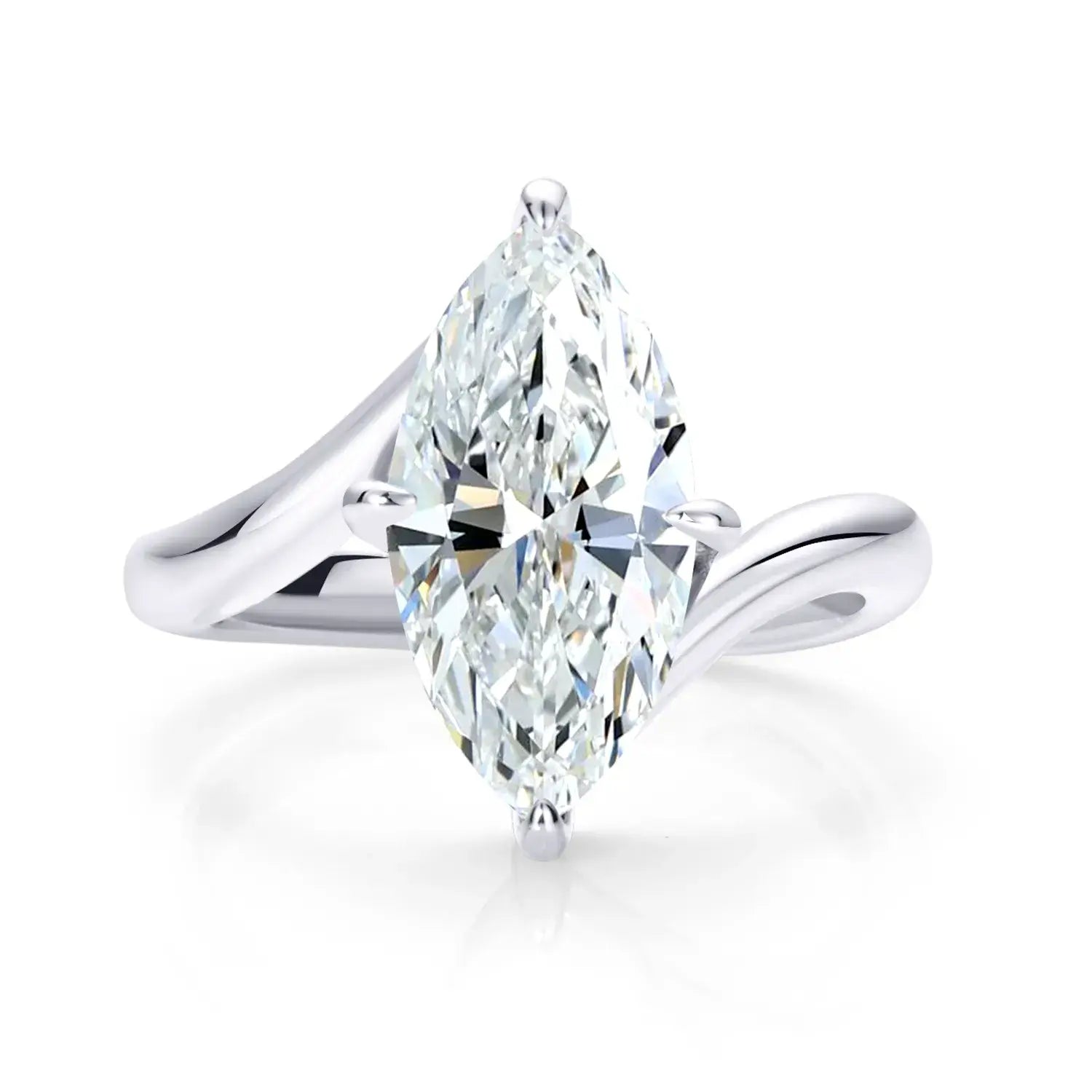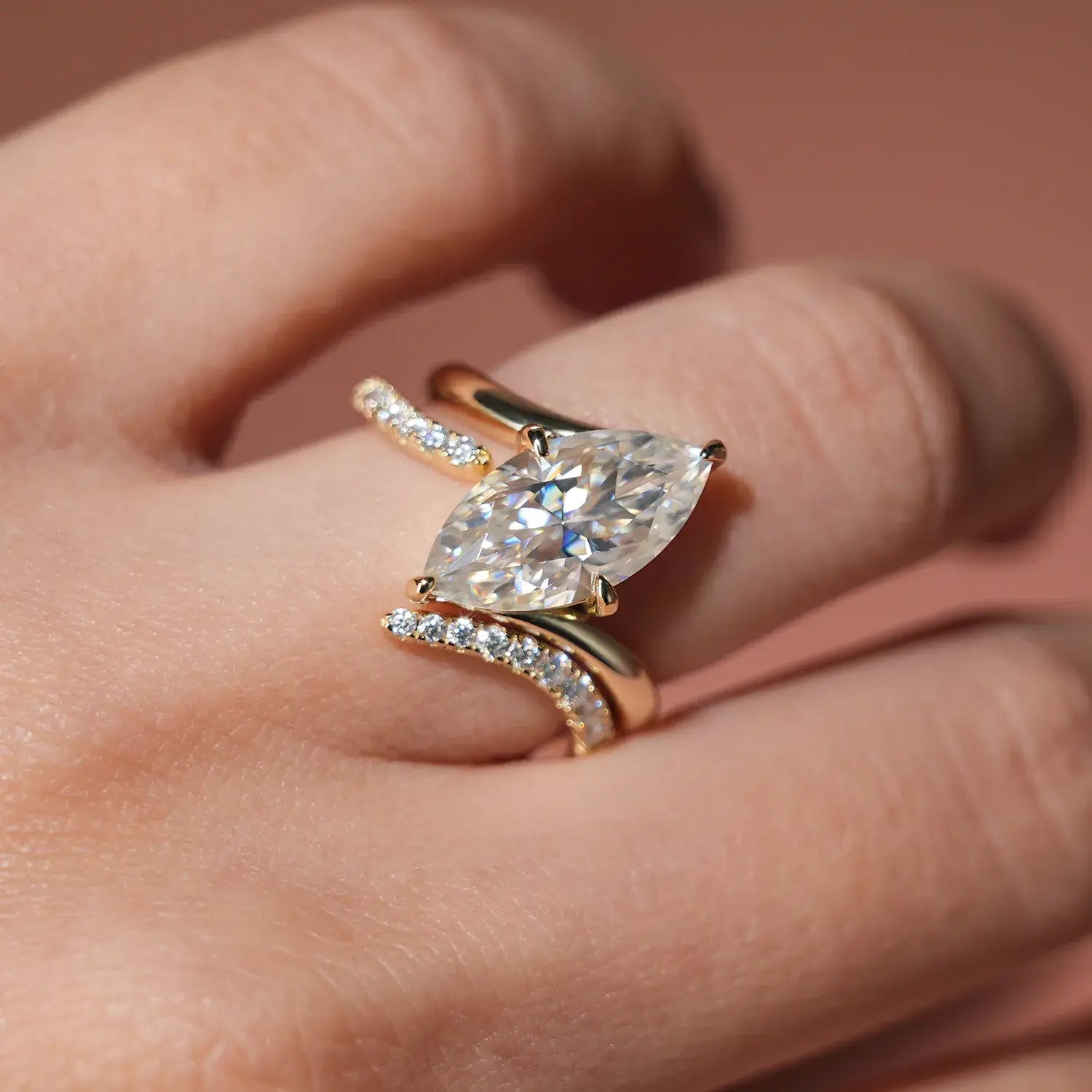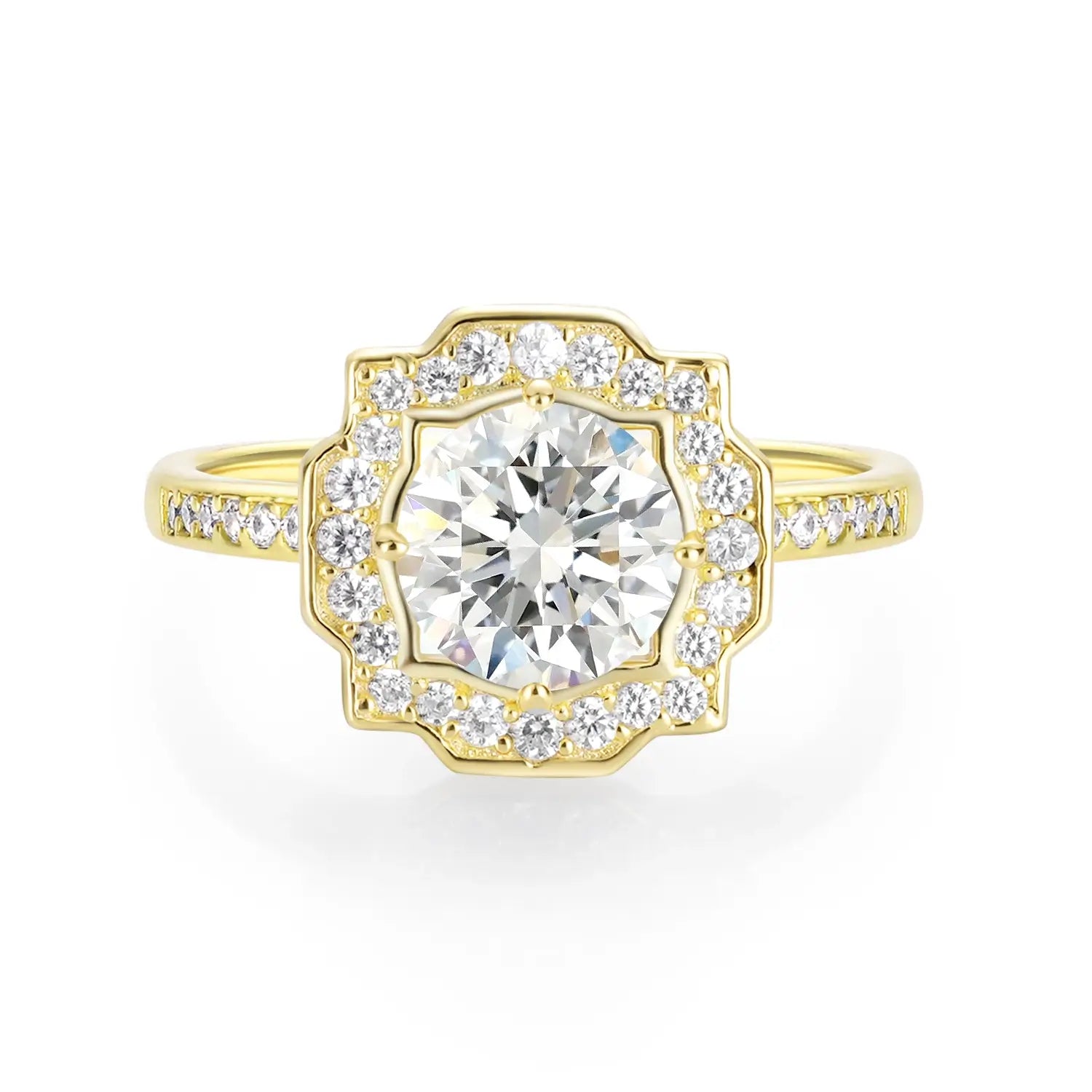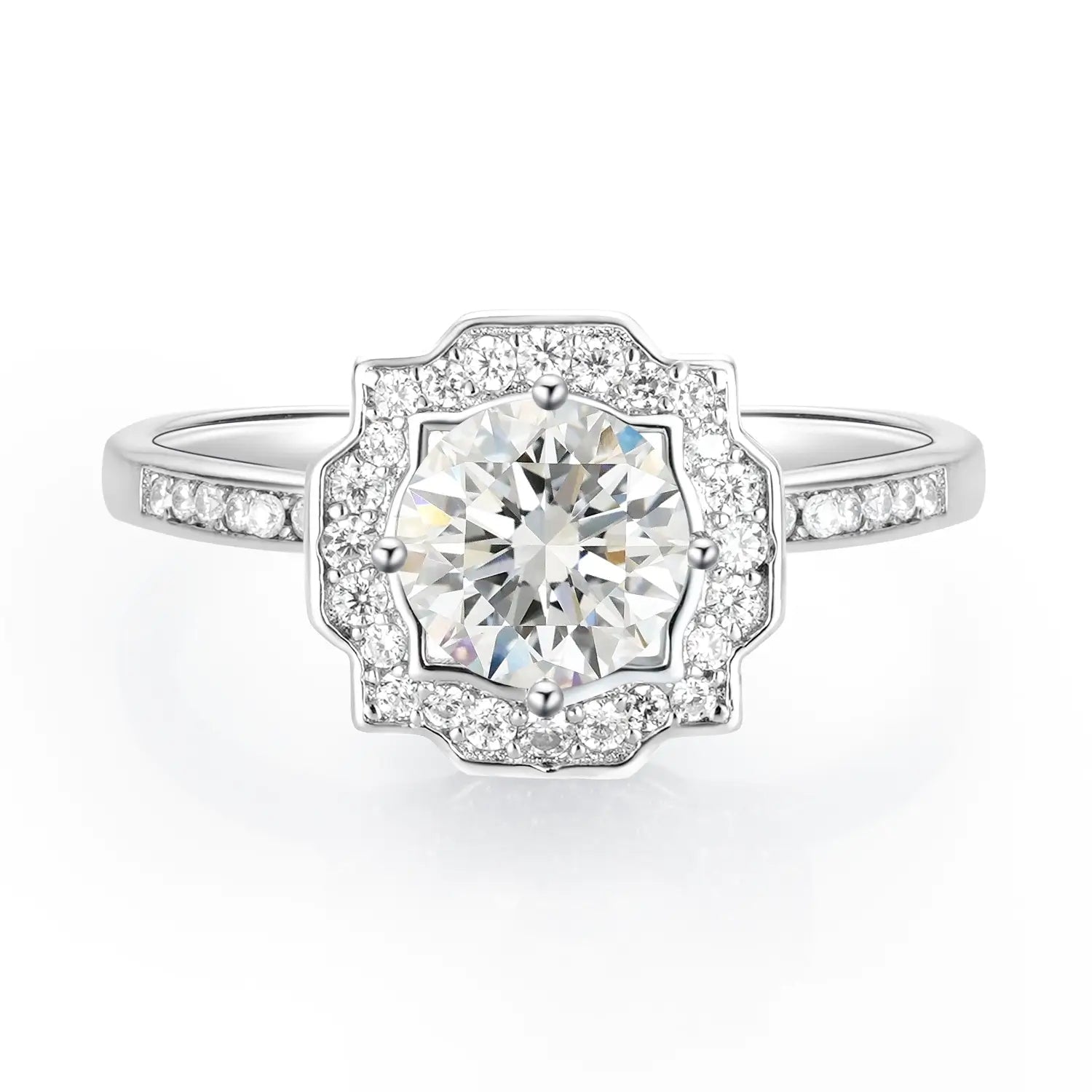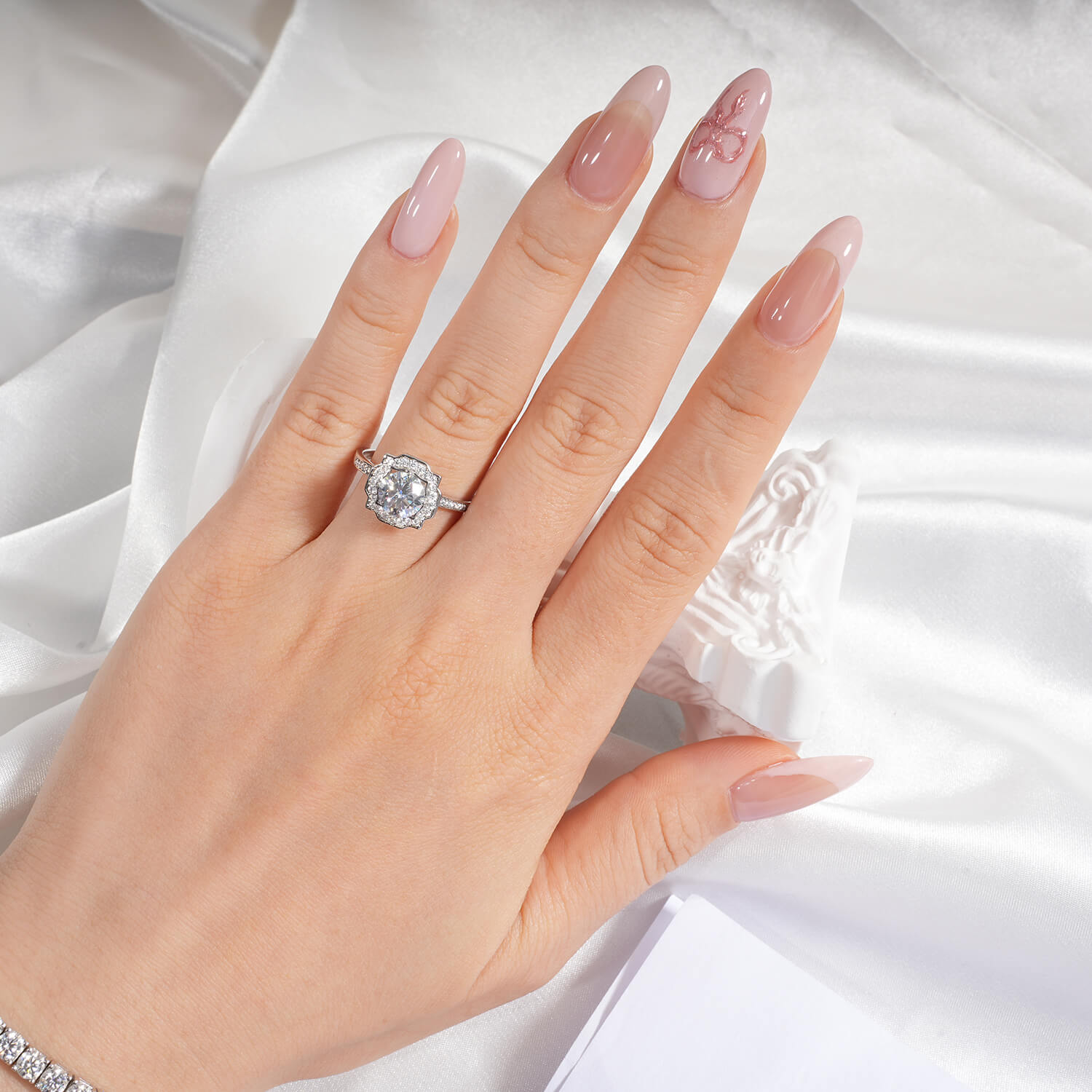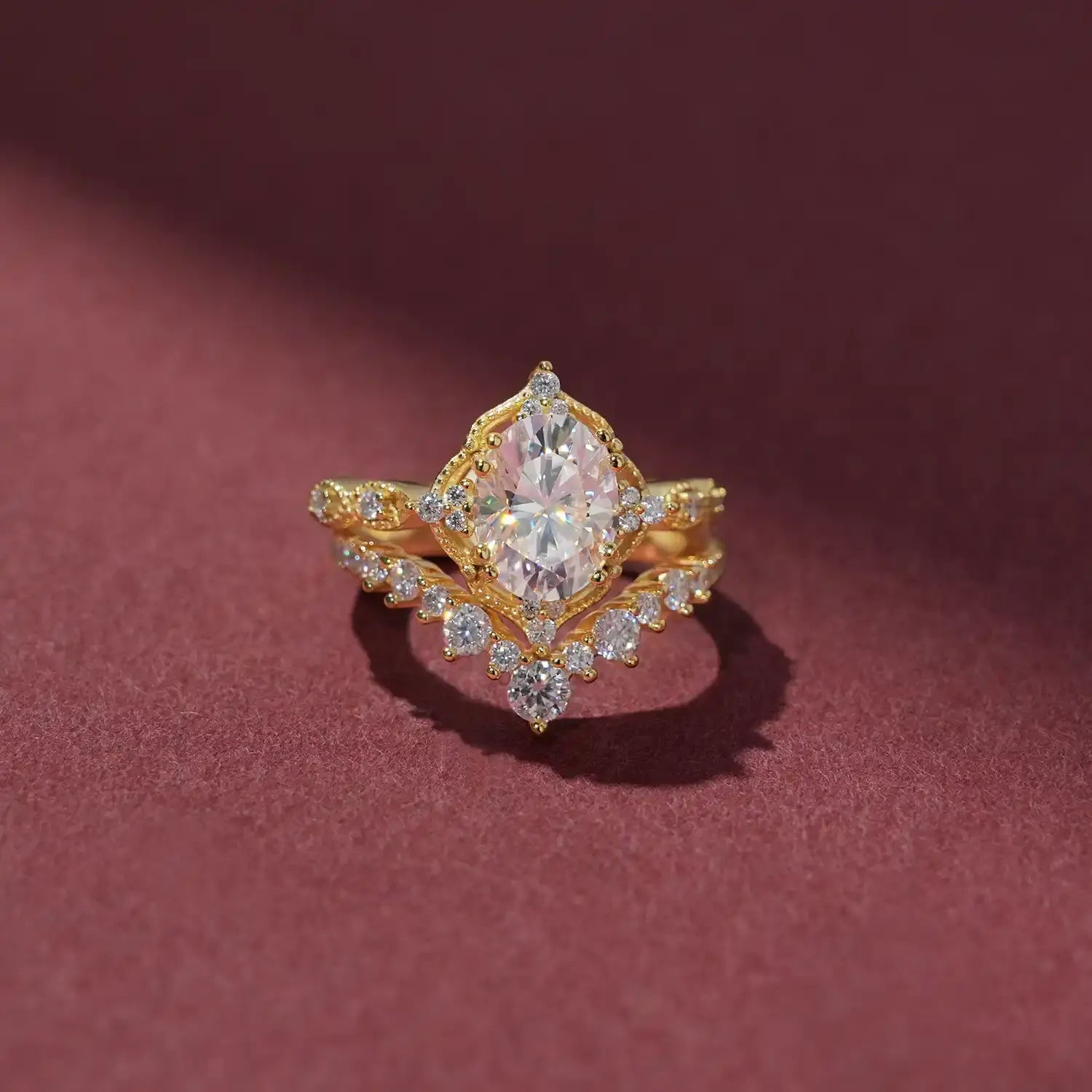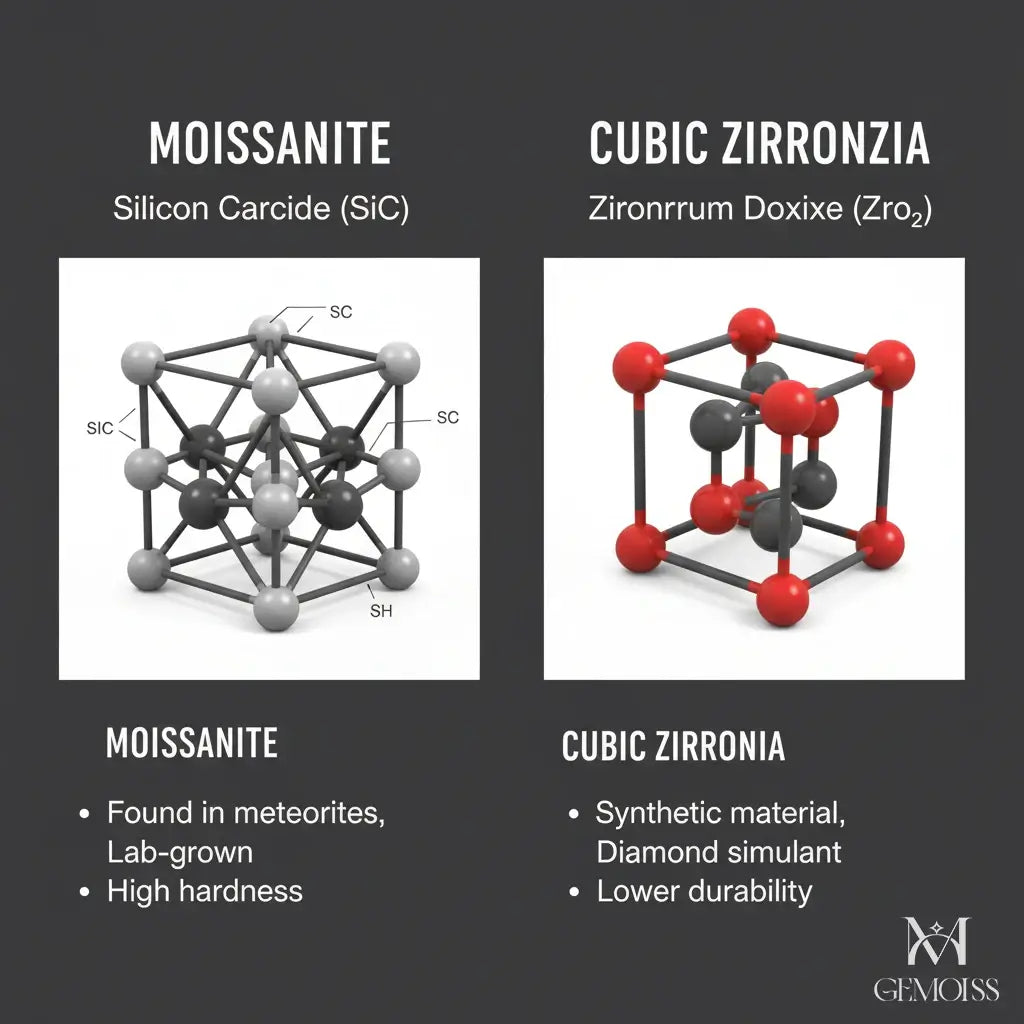
1. Molecular Structure: A Science-Backed Difference
The most fundamental difference between moissanite and CZ lies in their chemical and physical structure.
- Moissanite is made from silicon carbide (SiC). It was first discovered in a meteor crater in the late 19th century and later lab-grown for jewelry. Its atomic structure is closer to diamond, giving it impressive hardness and a unique light performance.
- Cubic Zirconia (CZ), on the other hand, is made from zirconium dioxide (ZrO₂). It is a completely synthetic material created to mimic diamond’s appearance but does not share the same crystalline structure or durability.
This difference in molecular composition sets the foundation for how each stone behaves in real-world use.
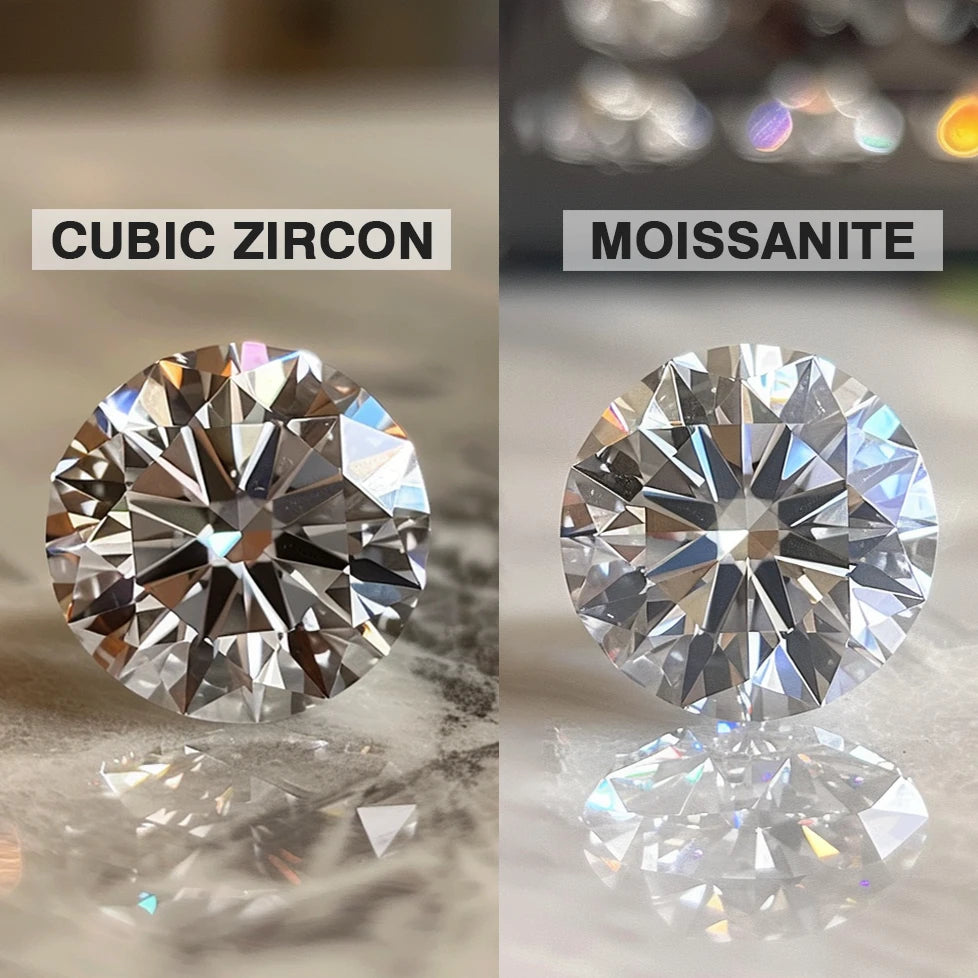
2. Optical Performance: Fire, Brilliance & Sparkle
Moissanite has a refractive index of 2.65–2.69, higher than diamond, resulting in more rainbow-like fire and exceptional brilliance. When you rotate a moissanite stone under light, it flashes vibrant spectral colors.
CZ has a lower refractive index of 2.15–2.18. It still sparkles, but the light return is softer, and over time, it can lose its luster due to surface wear.
Key takeaway: Moissanite tends to look “alive” under natural and artificial lighting, whereas CZ often looks flat or glassy after some wear.
3. Durability & Longevity
Durability plays a critical role in engagement rings, which are worn daily.
- Moissanite ranks 9.25 on the Mohs hardness scale, second only to diamond. It resists scratching and abrasion, maintaining its brilliance for decades.
- CZ ranks around 8–8.5. While relatively hard, it is more prone to scratches, clouding, and dullness over time.
This is why moissanite has become a preferred stone for couples who want an engagement ring that can last a lifetime without losing its brilliance.
4. Market Value & Price Perception
Moissanite occupies a unique position in the jewelry market. It’s more affordable than diamonds but has intrinsic value due to its durability and brilliance.
CZ, while inexpensive, has little to no resale value. Many consumers view it as a short-term alternative rather than a true heirloom stone.
For example, a 1-carat moissanite typically costs a fraction of the price of a diamond, but significantly more than CZ. Yet, its long-term performance makes it a strong value investment for engagement jewelry.
5. Appearance & Visual Clues
If you’re trying to distinguish the two stones without professional equipment:
- Moissanite often shows double refraction when viewed from the top under magnification.
- CZ looks perfectly clear, sometimes “too perfect,” and lacks that lively dispersion of light.
- Moissanite tends to have a warmer tint in certain lighting conditions, whereas CZ remains starkly white.
These subtle visual differences can help experienced buyers identify the stone at a glance.
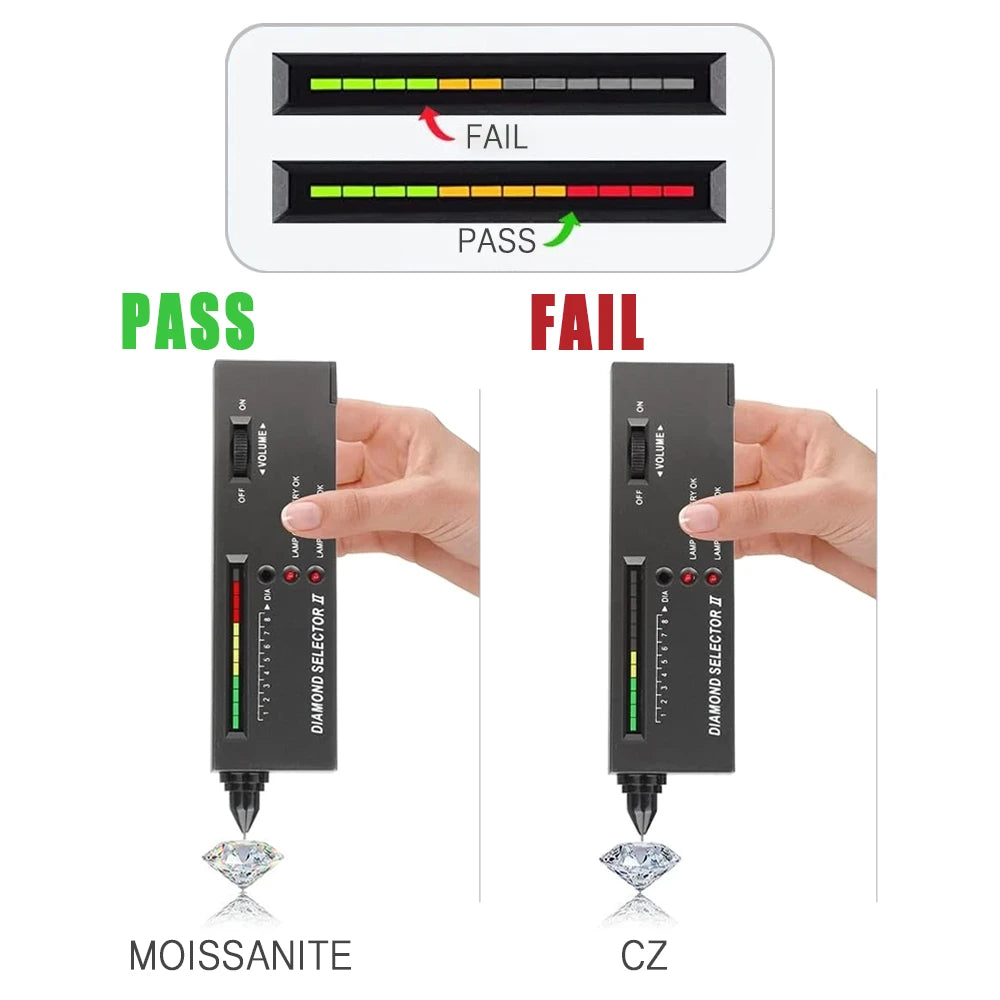
6. The Science Behind Diamond Testers
One of the most common questions is why both moissanite and CZ can be “detected” or tested with diamond testers.
Diamond testers primarily measure thermal conductivity. Moissanite conducts heat similarly to diamonds, which is why many basic testers will read moissanite as “diamond.” Advanced testers, however, can detect electrical conductivity, which distinguishes moissanite from diamond.
CZ has very low thermal conductivity, which is why it usually fails the test. This scientific distinction is also why moissanite is often considered the closest diamond alternative available today.
7. Everyday Use & Style Preferences
CZ is often used in fashion jewelry and pieces intended for occasional wear. It offers a budget-friendly sparkle for short-term use but may not withstand years of daily wear.
Moissanite, by contrast, is widely used in engagement moissanite rings because it balances beauty, durability, and cost. It also pairs beautifully with different metals such as sterling silver, 14K gold, and platinum.
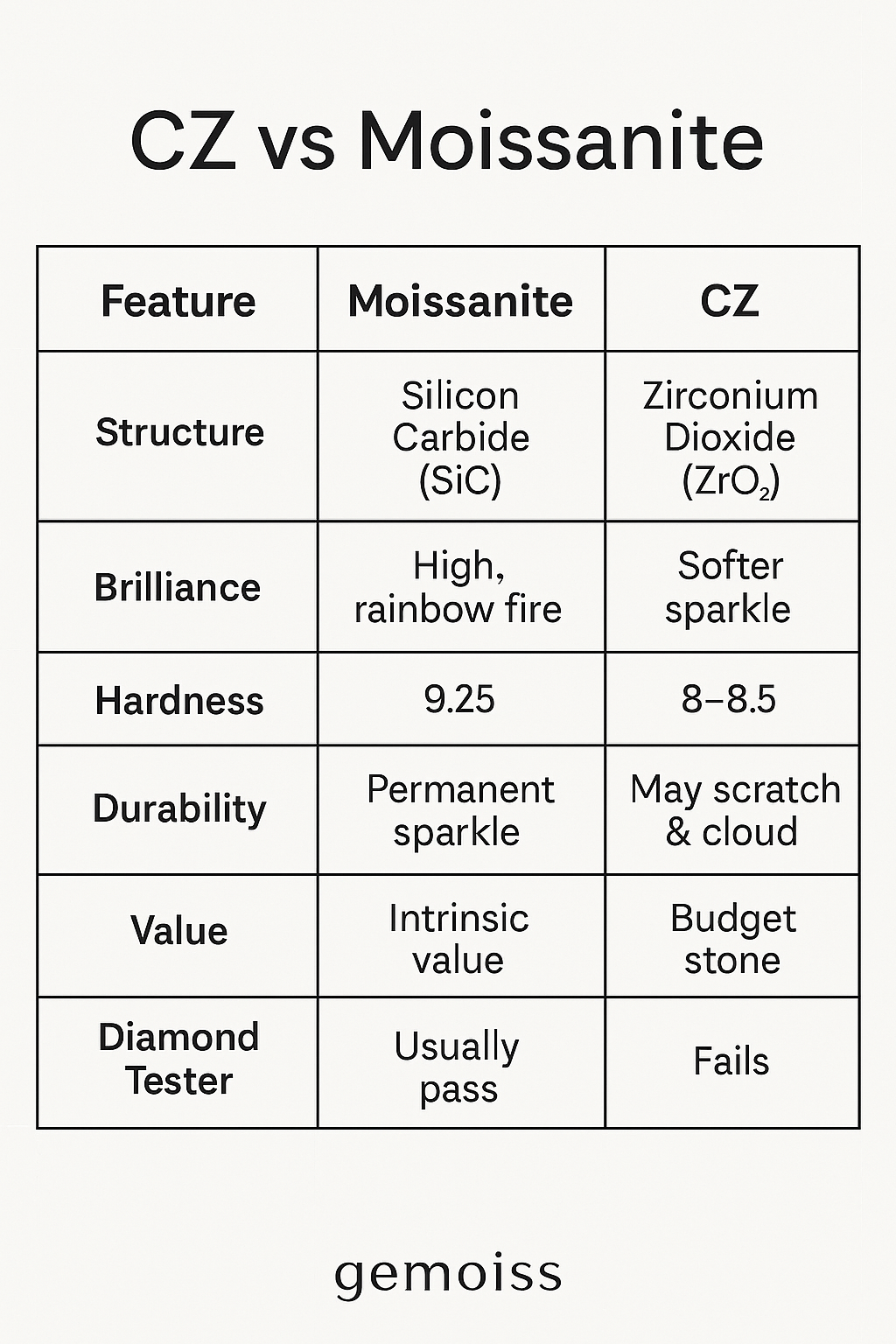
8. Consumer Perception & Market Trends
Recent market data and consumer surveys indicate that moissanite is steadily gaining popularity as a primary engagement stone. Couples increasingly value ethical sourcing, durability, and brilliance—areas where moissanite excels.
CZ remains popular for costume and travel jewelry, but moissanite is viewed as a smart, meaningful choice for long-term wear.
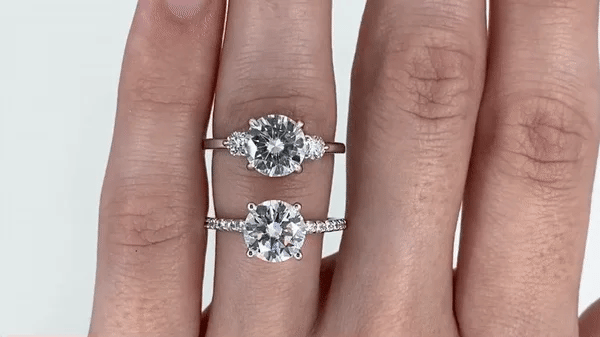
9. Final Verdict: The Smart Value Choice
When comparing diamond, lab-grown diamond, moissanite, and CZ:
- Diamond: Classic luxury, highest cost.
- Lab Diamond: High-end option, identical structure to natural diamonds.
- Moissanite: Best value for money, durable, brilliant, and passes most diamond testers.
- CZ: Budget sparkle, but less durable and less valuable over time.
For couples looking for affordable moissanite engagement rings with exceptional sparkle and durability, moissanite stands out as the clear winner.
Q&A: Fast Facts About Moissanite vs CZ
Yes, moissanite can pass most thermal conductivity testers, but advanced dual testers can distinguish it from real diamonds.
Yes. Due to lower hardness, CZ can scratch and cloud, leading to a loss of brilliance.
Absolutely. Moissanite offers durability, brilliance, and value, making it one of the best alternatives to diamond.
Look for stronger fire, double refraction under magnification, and how the stone reacts to light. Moissanite shines more vividly.
Final Thoughts
As more couples seek timeless, ethical, and cost-effective options, moissanite has become a modern classic in the engagement ring world. Its balance of affordability, brilliance, and durability makes it a clear standout over CZ — not just visually but in long-term value.
If you’re exploring elegant engagement moissanite rings, browse the curated collections at GEMOISS for timeless designs that combine craftsmanship with lasting beauty.

